— see red: to become very angry (Merriam-Webster dictionary)
Or I could simply be referring to the colour of the Michelin guide.
Fine dining has always been a mode of indulgent, escapist fantasy, and the appeal of the Michelin guide is that it purports to signpost the best places in each city for partaking in these fantasies. Whilst it is easy to form an opinion on the merits (or lack thereof) in relation to the choice of recipients of Michelin stars and Bib Gourmands in your own city, one is left utterly lost and at the mercy of word-of-mouth recommendations and random internet trawling of reviews and blogs when it comes to identifying good fine dining options overseas.
The fact that a little red book allows you to sidestep the above research process by helpfully setting out a list of carefully curated options, said to be prepared by expert professionals with a genuine passion for fine dining against consistent assessment criteria (instead of Yelp or similar food review platform elite members with crossed arms and arched eyebrows), makes relying on the Michelin system majorly tempting when one is in a foreign city in need of inspiration for where to have your gustatory socks blown off. It is patently obvious that the Michelin system is highly discretionary and largely arbitrary, but the convenience of believing the Michelin guide is an accurate and reliable authority makes buying into the illusion quite the easy pill.
The flip side to relying on the Michelin guide, of course, is that expectations are set. When such expectations are not met, fumes of disappointment are likely to emit copiously with more vigour than those above Lim Yuan Satay at Fengshan Market.
During my recent trip to Tokyo at the end of 2017, I visited four different one-Michelin star restaurants – Sublime (Innovative), Abysse, Florilège and Nabeno-Ism (French). The visits were coincidentally done in alphabetical sequence. The following accounts are not intended as full-length reviews of the restaurants, but serve as a collection of thoughts I have on my experiences at the respective restaurants. The restaurant information is reproduced from the Michelin Guide website, and is correct as of 10 January 2018.
Abysse (French, one-Star)
Tokyo Michelin Guide Description : The set menus feature modern art-like arrangements, skilfully bringing out the natural flavours of the seafood which forms the main dishes. The chef pays close attention to the combination of ingredients and how they are heated, and balances sweetness and sourness using citrus fruits as an accent. Made with more than 10 seafood ingredients, the soupe de poisson speciality is flavoured with spices and orange.
Chef: Kotaro Meguro
Price:
Lunch = menu ¥6,264
Dinner = menu ¥10,584
The seafood-themed Abysse is situated within an unassuming school-like building in Aoyama, and its premises is interestingly the space formerly occupied by Florilège before the latter shifted to swankier digs in Harajuku to accommodate its supernova-esque ascent. Abysse is helmed by Kotaro Meguro, a young chef-owner with shaggy hair who would not look out of place in a Death Note movie. The restaurant accommodated my request to have the dinner menu during lunch service, which was a happy surprise.
The space itself was akin to a minimally lit, minimalist and elegant dining room. I noted that many diners were older but sophisticated and classy-looking women. The physical menu was very plain, only stating the number of courses without going into any further particulars. Service was primarily from front-of-house manager, Tatsuhiko Taniguchi.
The courses were enjoyable and generally proficient in delivering the goods, although the Sumiika (Japanese spineless cuttlefish) came across as being stickier and slimier than a Zara-wearing, arm-tattooed beefcake on a Zouk couch on Saturday night. The intriguing, savoury, mont blanc-esque Amadai (tilefish) with shiitake mushroom and chestnut sauce (?!) is likely to come across better on paper than in your mouth, whilst elsewhere the refreshing cucumber pasta was a playfully fun surprise and the plump and supple Hokkaido oysters, resting in a comforting dry fennel root bouillon, brought urgently explosive pleasure to the proceedings.
If I had one gripe, it would be that the showcase of seafood as per the restaurant’s concept was not quite as glossy and fleshed out as I had envisaged – conceptually, aesthetically or in terms of the seafood used. I suppose a seafood-forward restaurant does face limitations due to the seasonality of ingredients.
As we segued to the dessert courses, Mr. Taniguchi came over and engaged us in conversation about the dining scene in Singapore as well as our plans for the rest of the trip. At the end of the meal, I was presented with a little birthday gift – homemade acai berry jam. Chef Meguro and the manager greeted us at the door and thanked us as they brought us outside. Chef Meguro politely enquired about the photography that was going on, and I promised that I would share my positive experience at Abysse on social media. They bid us farewell, and did not head back into the restaurant until we were out of sight.
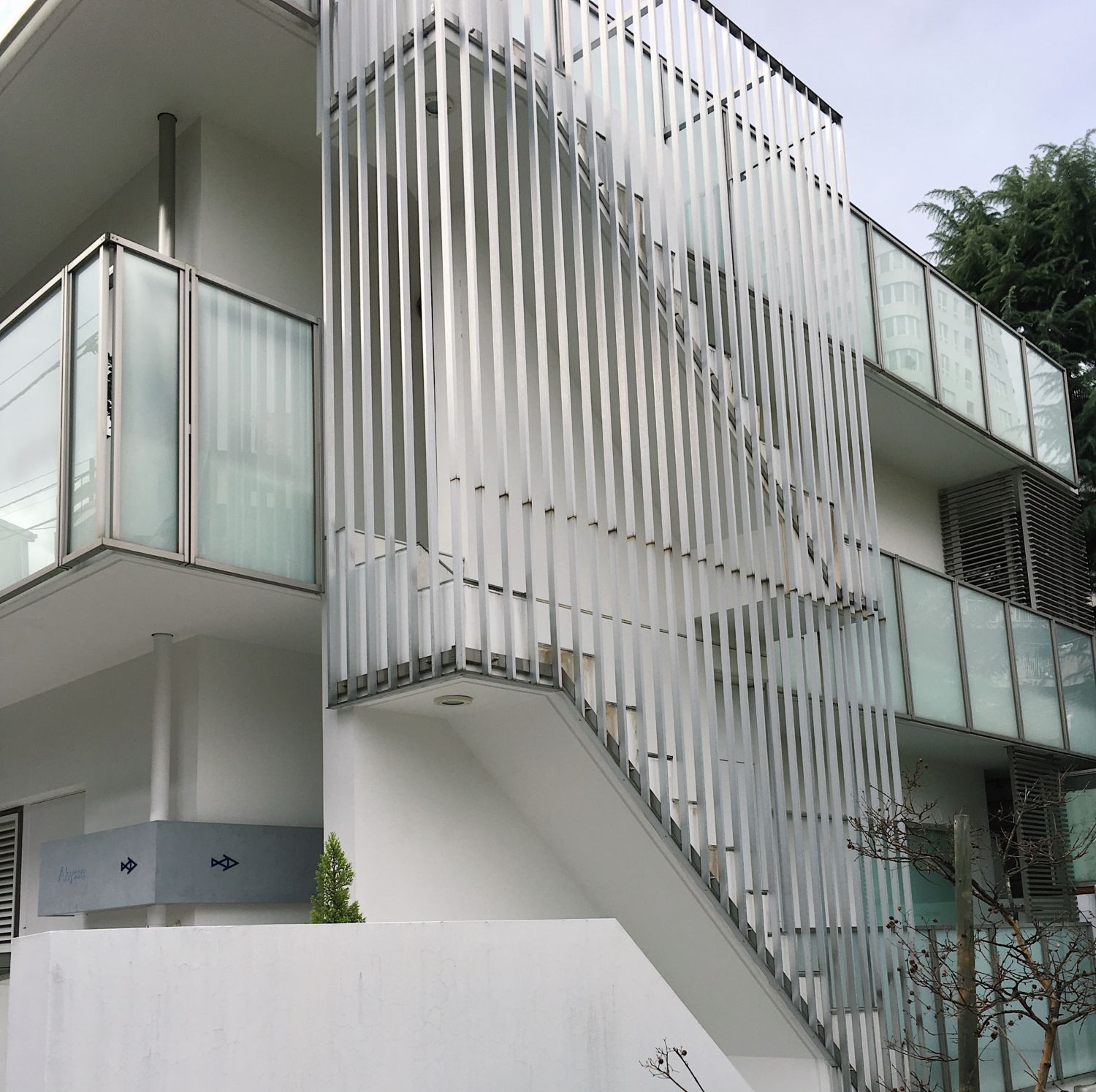
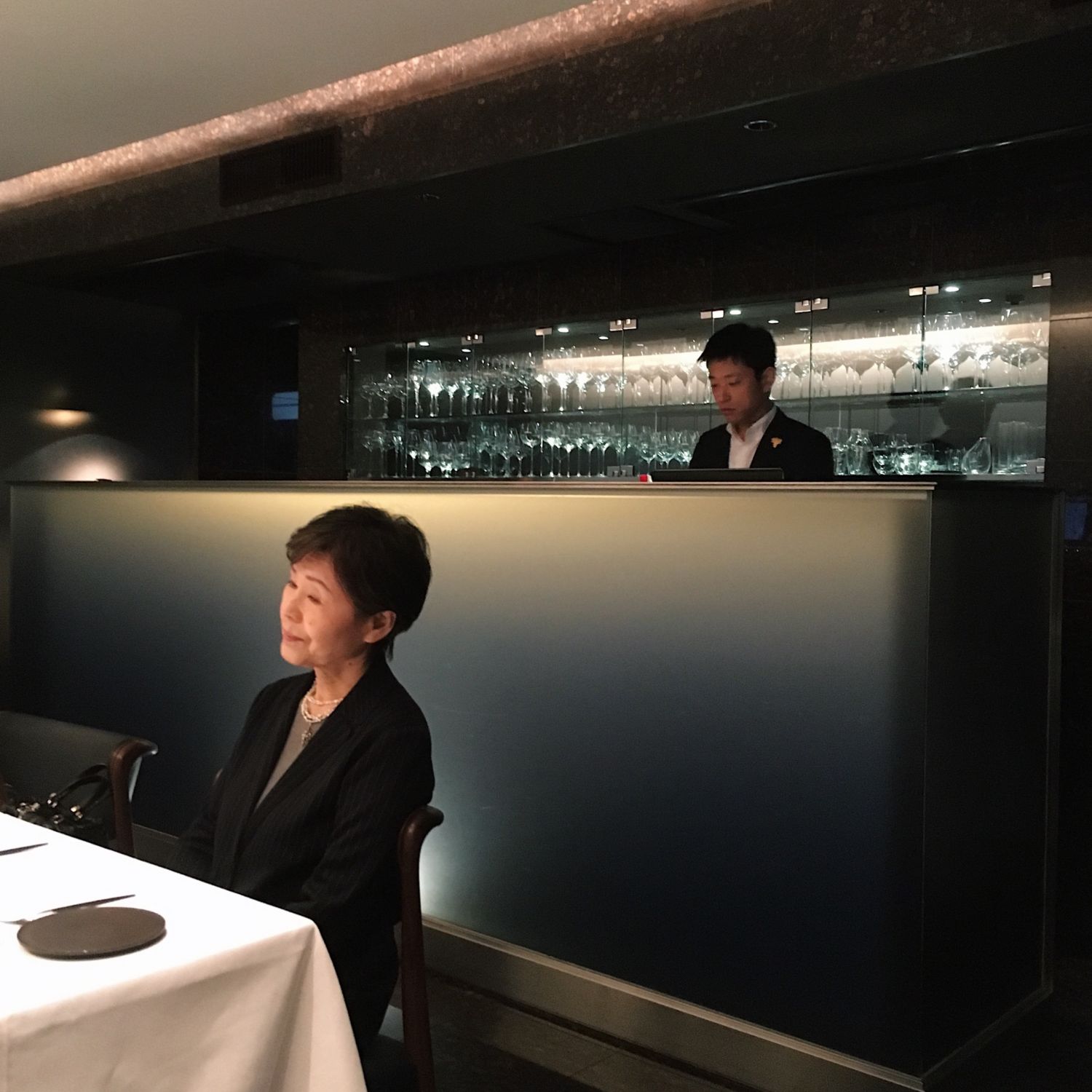
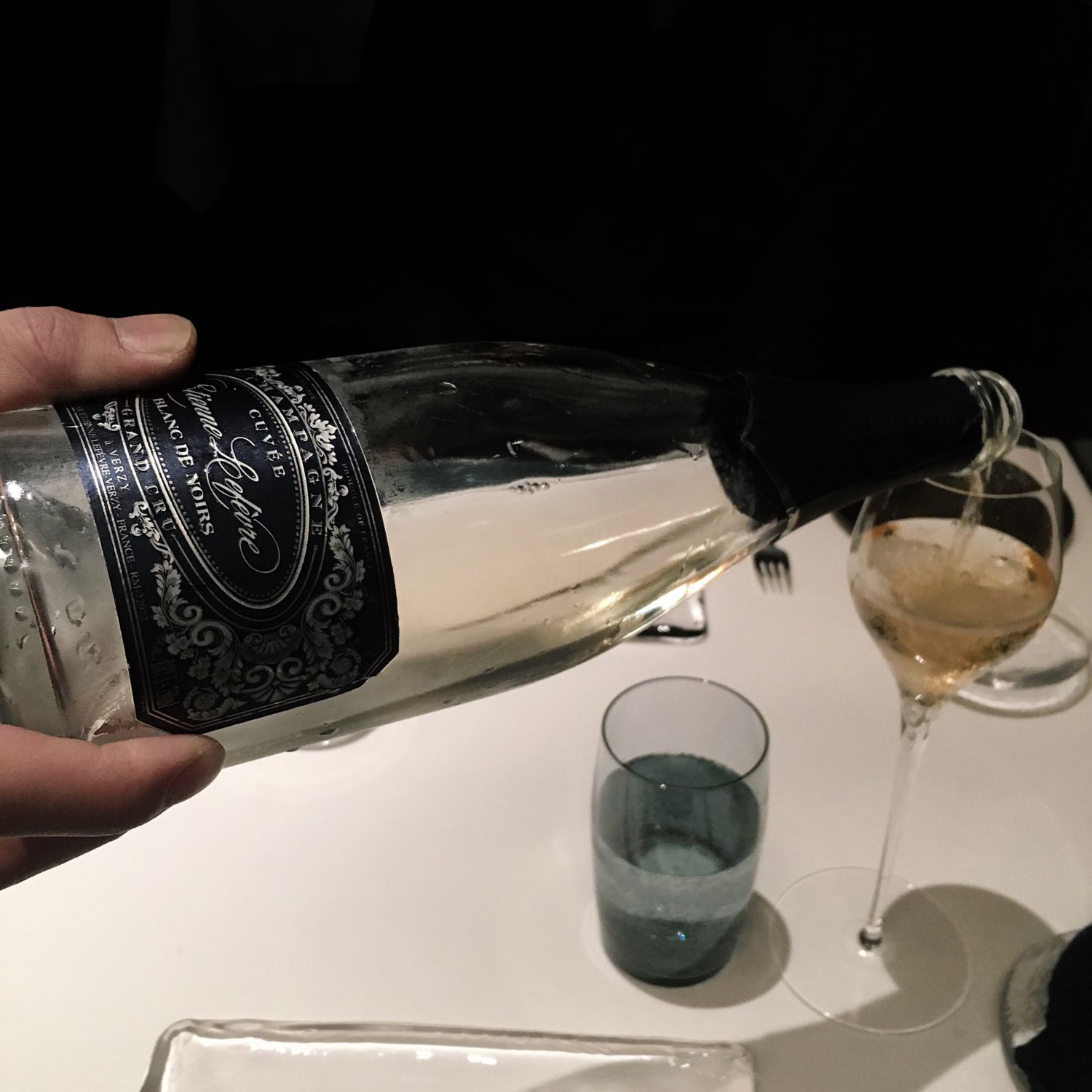
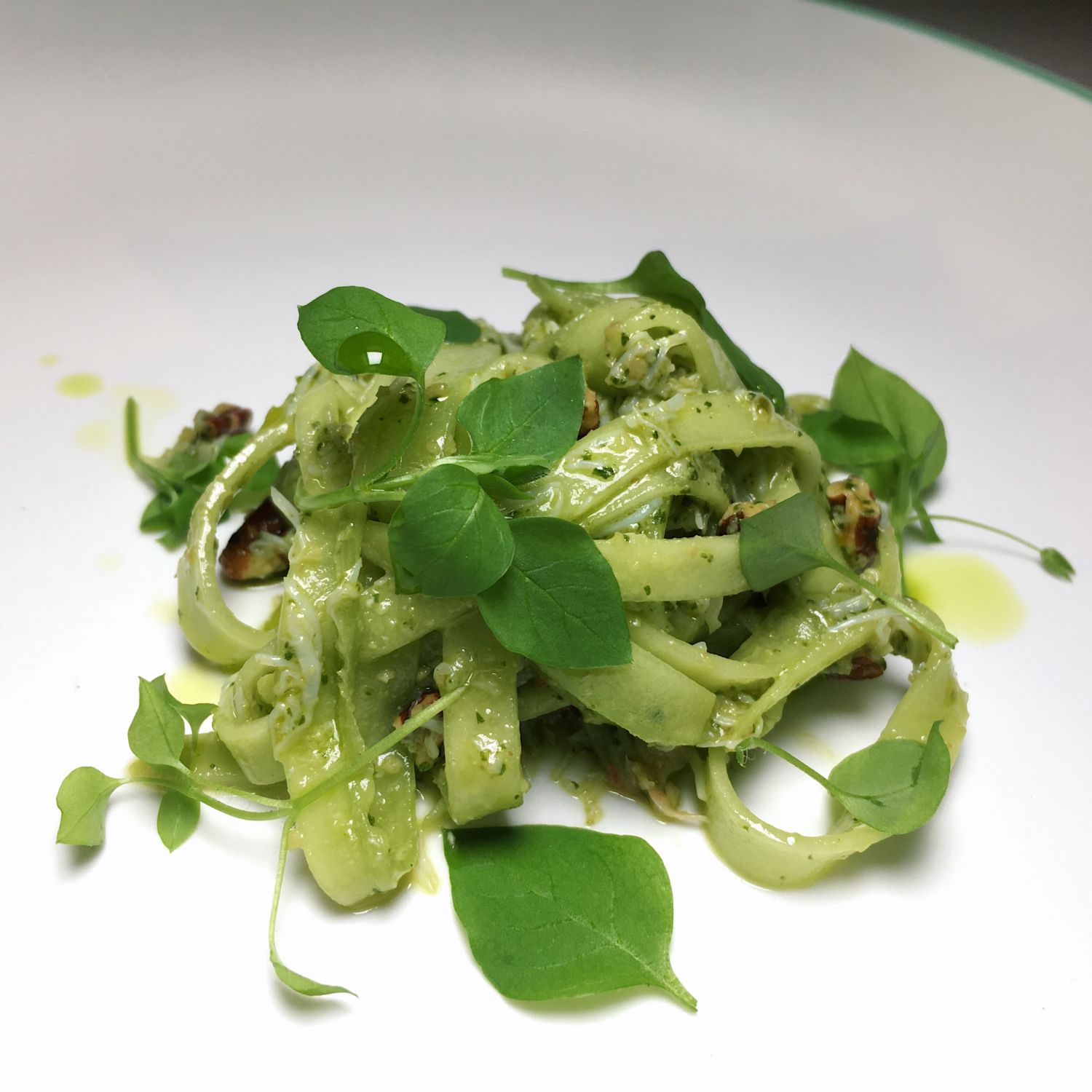
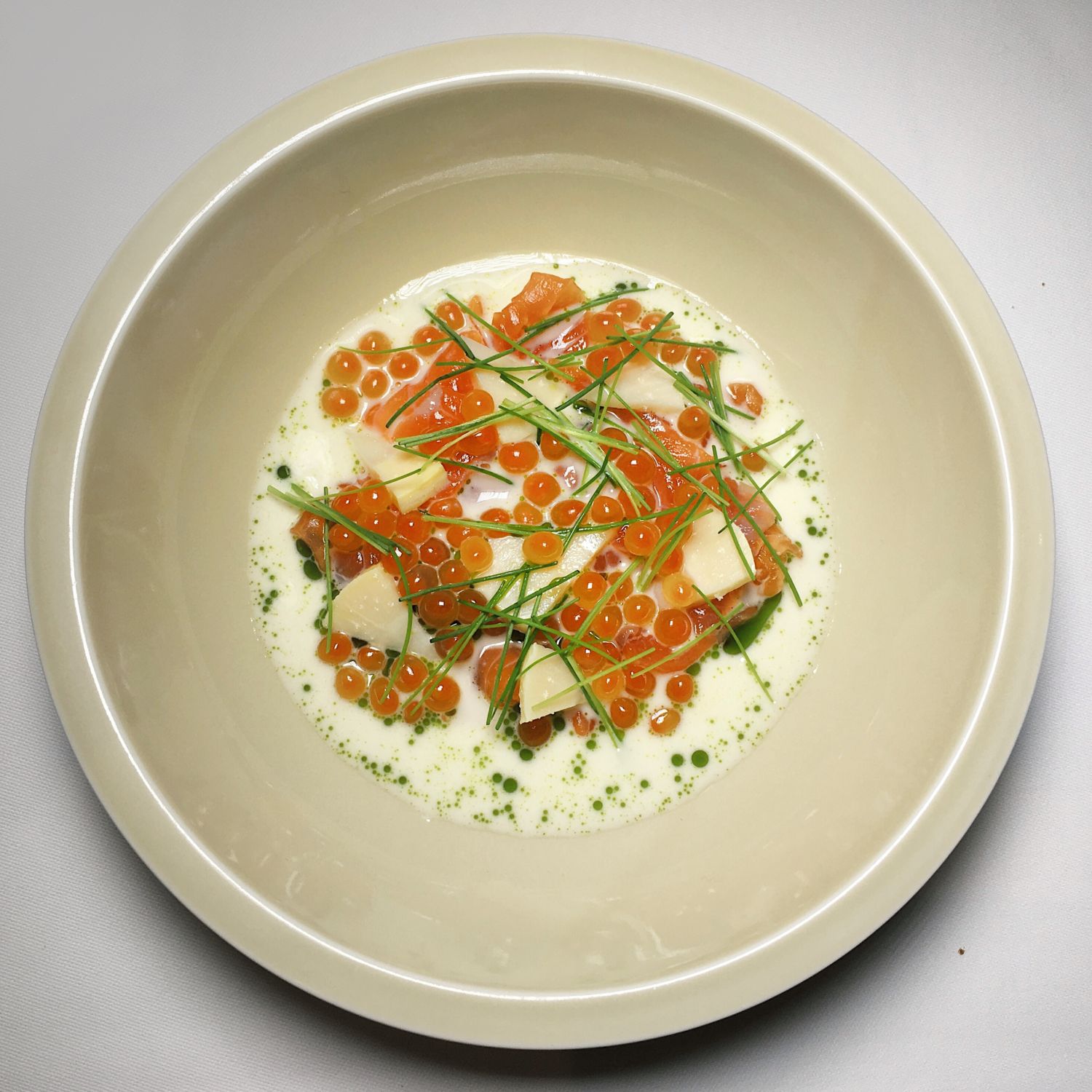

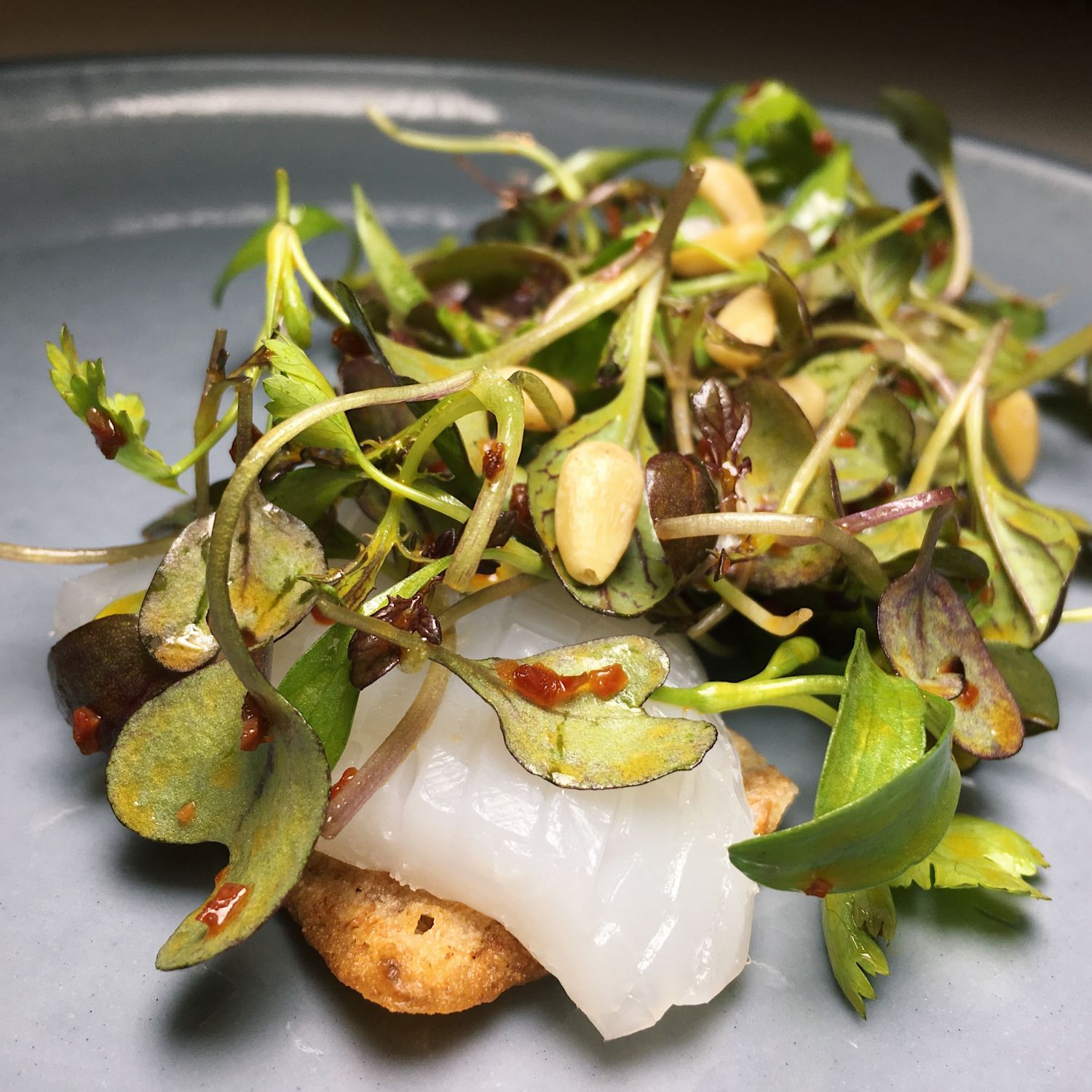
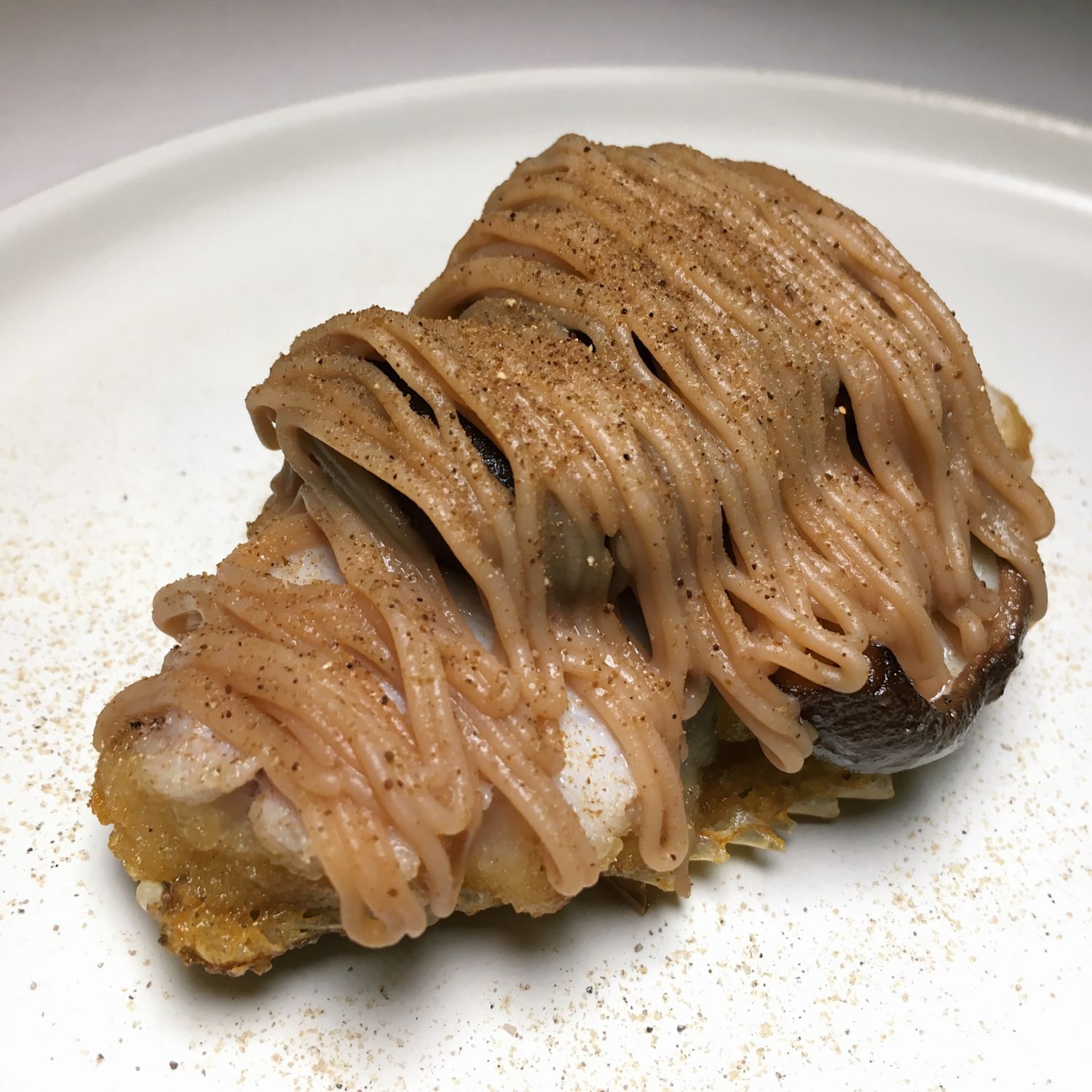

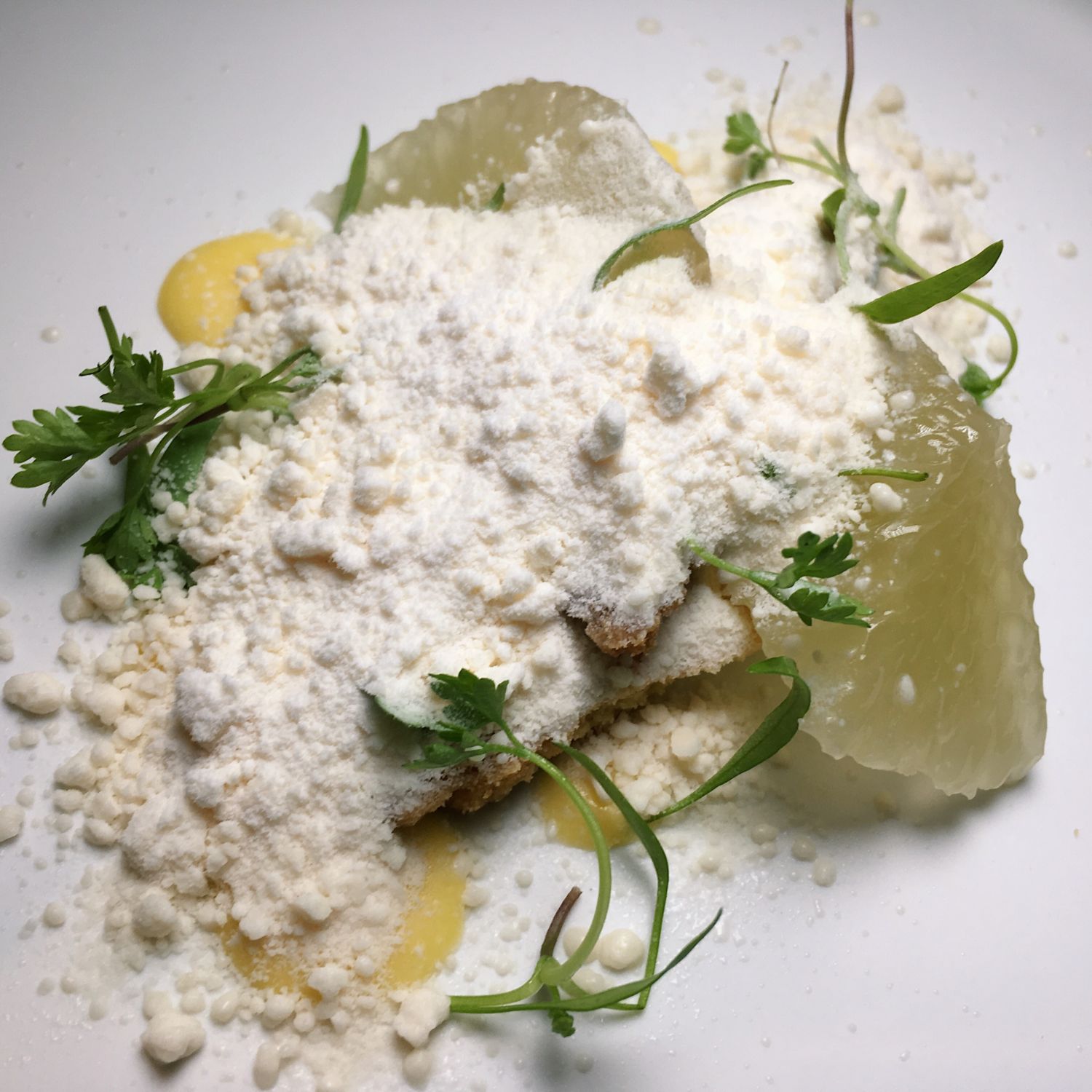

Abysse
4-9-9, Minami-Aoyama, Minato-ku, Tokyo
Florilège (French, two-Star)
Tokyo Michelin Guide Description: The large, U-shaped counter creates a theatre-like unity between the kitchen and the guests. Ingredients and theme are all that are provided for the set menu, which comprises creative dishes presented in a novel way. The owner-chef also has an interest in the issue of food wastage, and the dish of beef from an older cow is an example of one created from a new set of values.
Chef: Hiroyasu Kawate
Price:
Lunch = menu ¥7,020
Dinner = menu ¥12,960
The day that I visited Florilège was the same day that Florilège received its second Michelin star, which peppers the story I shall soon share with a fair bit of irony.
I was at Florilège for lunch. Florilège was the glossiest of the four restaurants I visited, not just in its dramatic and expensive-looking interior but also in terms of the reputation of both the restaurant as well as its charismatic chef, Hiroyasu Kawate, who is quite the media darling. (Florilège recently had a highly-publicised collaboration with our own Janice Wong in August 2017.) Reservations have to be made at least one month in advance.
Guests are seated around a U-shaped counter, and the combination of the lighting, the table centrepieces and the grandeur of dish presentation gave the proceedings a highly dramatic and theatrical quality. The average guest was either Caucasian or one half of a couple. The service was highly efficient, being capable of attending to multiple seatings at different timings, and the restaurant was nicely equipped with a strapping Canadian-sounding staff to attend to the English-speaking.
Despite the scale of the service and size of the team, things ran like clock-work in manner of a brisk, well-oiled corporate machine.
The amuse bouche was an eggplant mousse tarte on a spoon. To my horror, I clumsily dropped the spoon, and the entire thing fell splat in a most undignified and unceremonious fashion onto my napkin. Within twenty seconds, the Canadian staff replaced my eggplant tarte with a smile.
The most dramatic-looking dish was Florilège’s signature sustainable Miyazaki beef carpaccio. The beef carpaccio was positively sashimi-esque in how clean it tasted, with additional herbs to further obscure any inherent beef gaminess which may arise, and the hay-smoked potato puree was a revelation. Elsewhere, the Iwate oyster clashed with the accompanying fromage blanc for the diner’s affection, and the Amazon cacao dessert‘s appearance (not the taste, mind) reminded me of something that puppies leave along an East Coast Park running path.
And then there was the Suckling Pig with caramelised rice and red wine pesto sauce.
One of the courses at Florilège, labelled “To Share” on its menu, involves large slabs of meat carved into individual portions to be served to each guest. The dish would typically be brought around the room and showcased to the guests before the carving is done. The choice of meat that day was the Suckling Pig which, for all intents and purposes, was happily fatty and possessed the finest qualities of a Chicken McNugget.
My dining companion’s portion was fine. Upon slicing my own piece, however, I discovered that it was severely red and bloody in the middle, and I had to spit out one forkful as it was virtually inedible.
Things were not good.
When the plates were being refreshed, the staff who came over to us looked briefly at the uneaten red lump on my plate. He did not say anything.
On an unrelated note, Florilège was the only restaurant of the four whereby the chef did not greet the guests at the end of their meal.
That night, Florilège received an additional Michelin star.
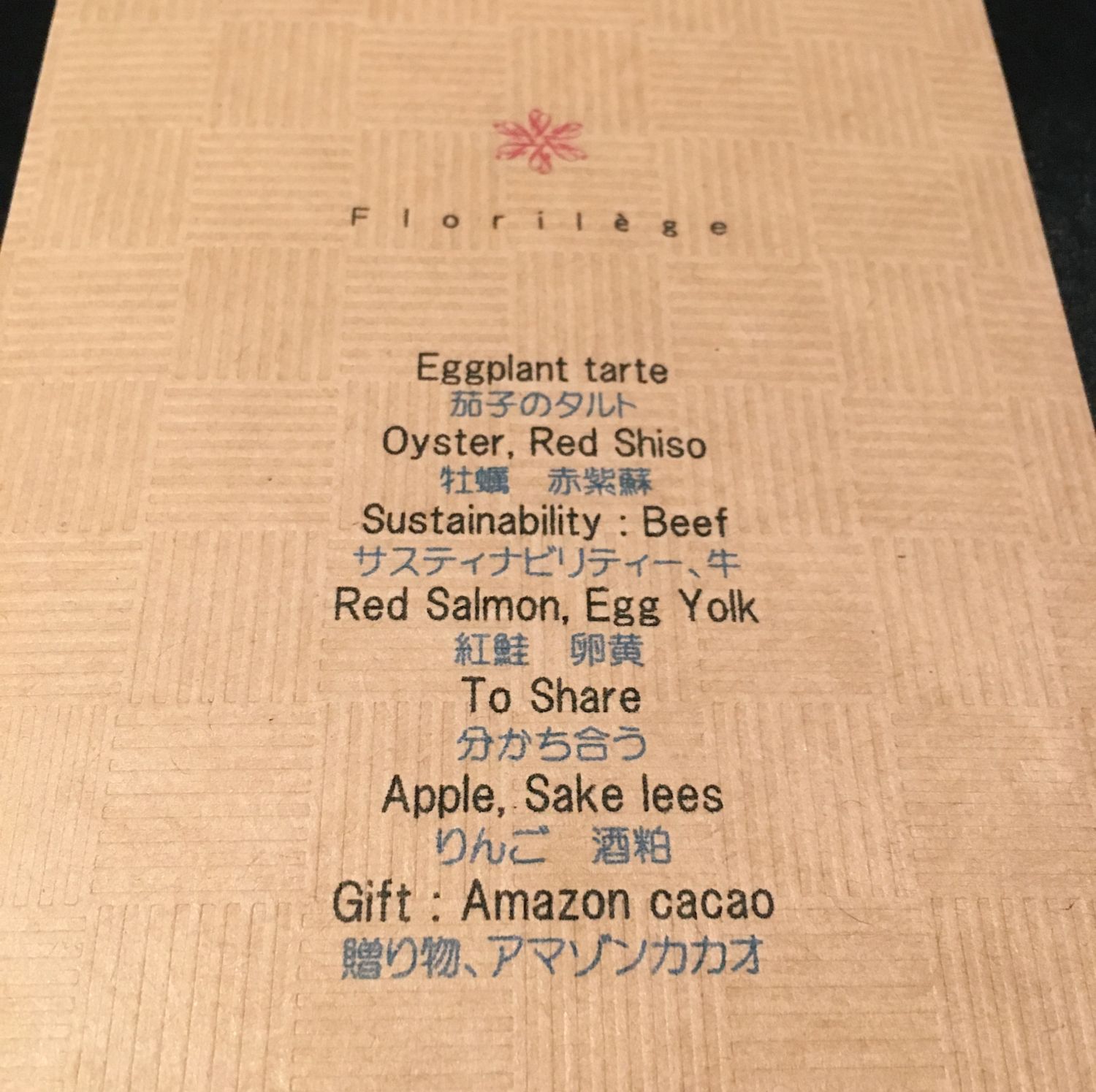
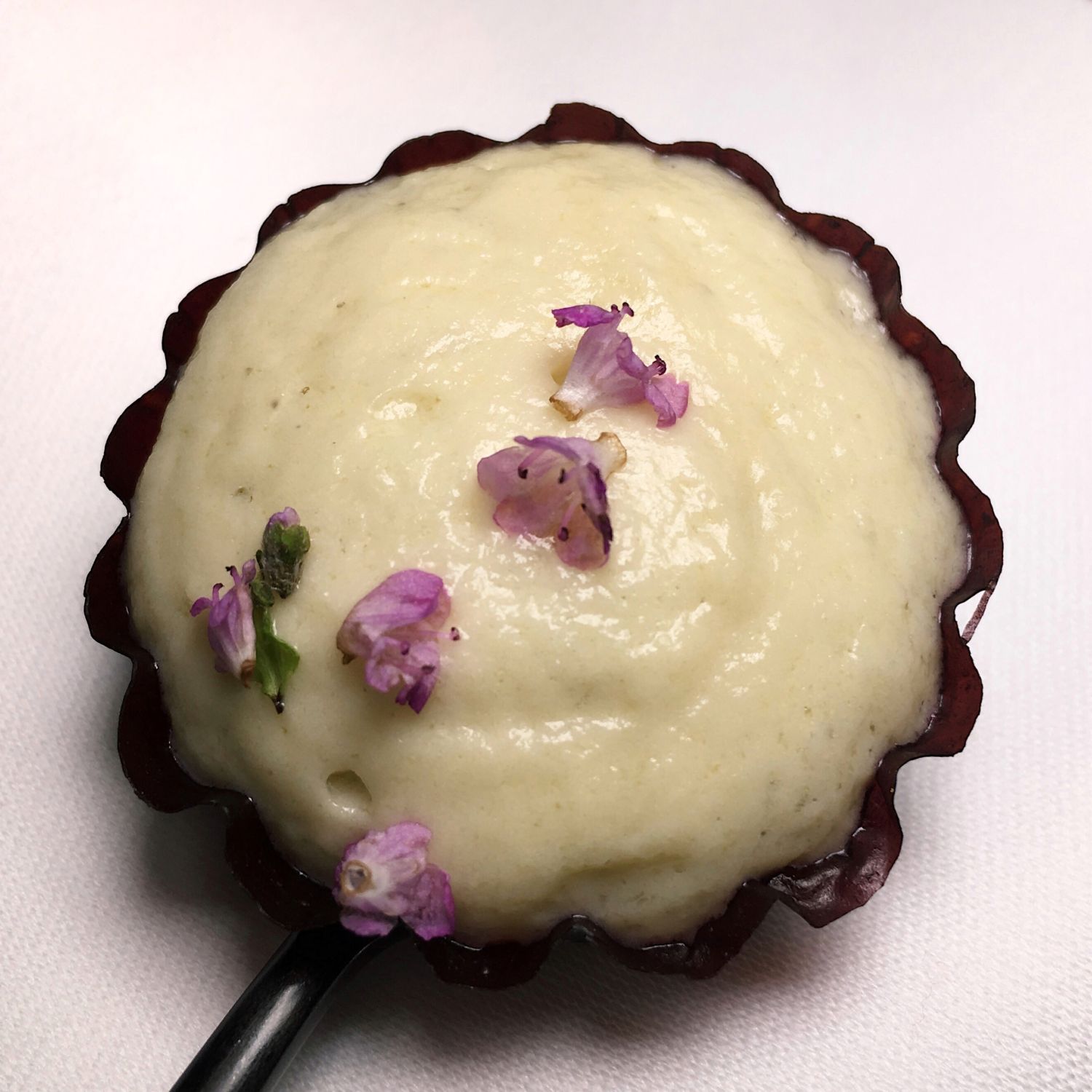
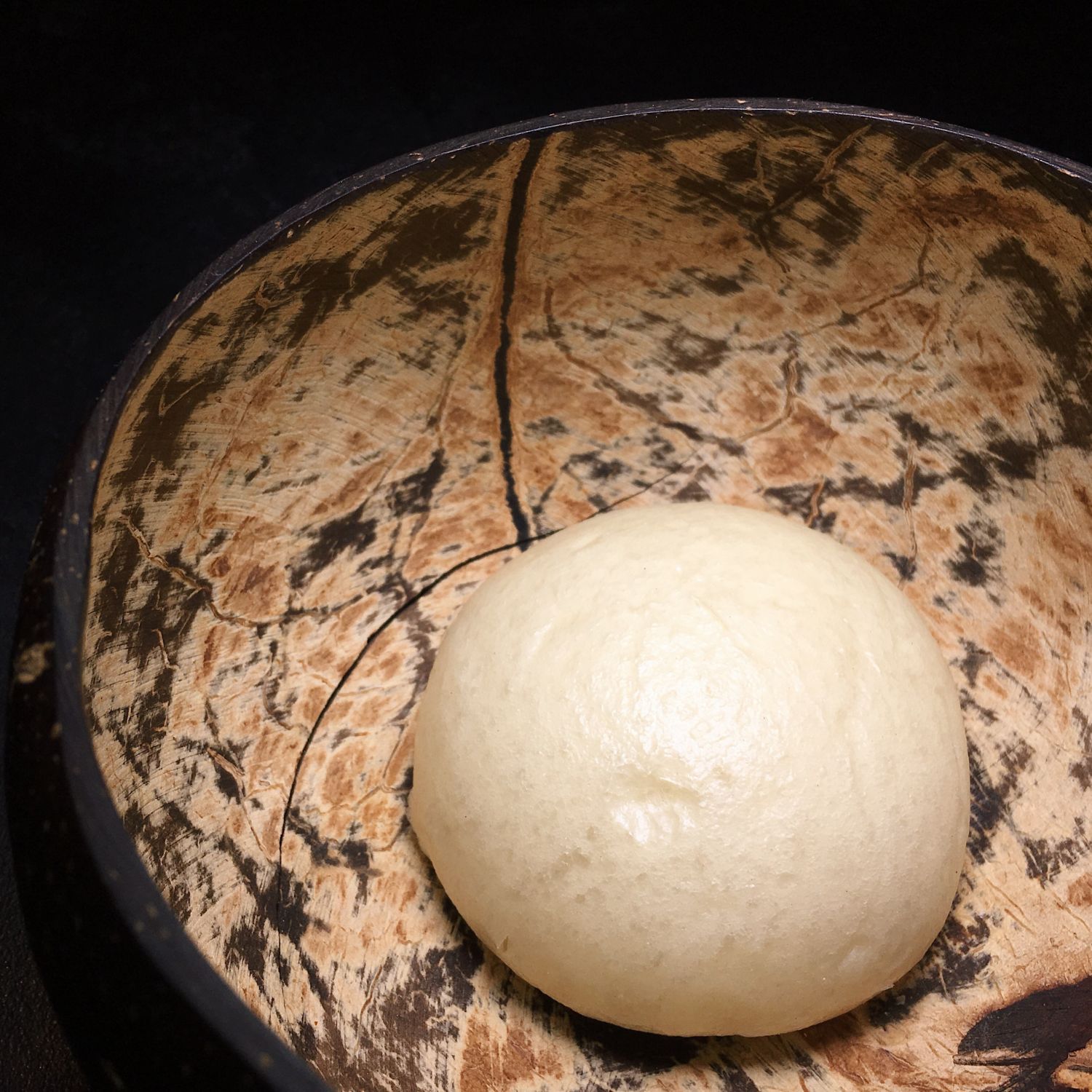

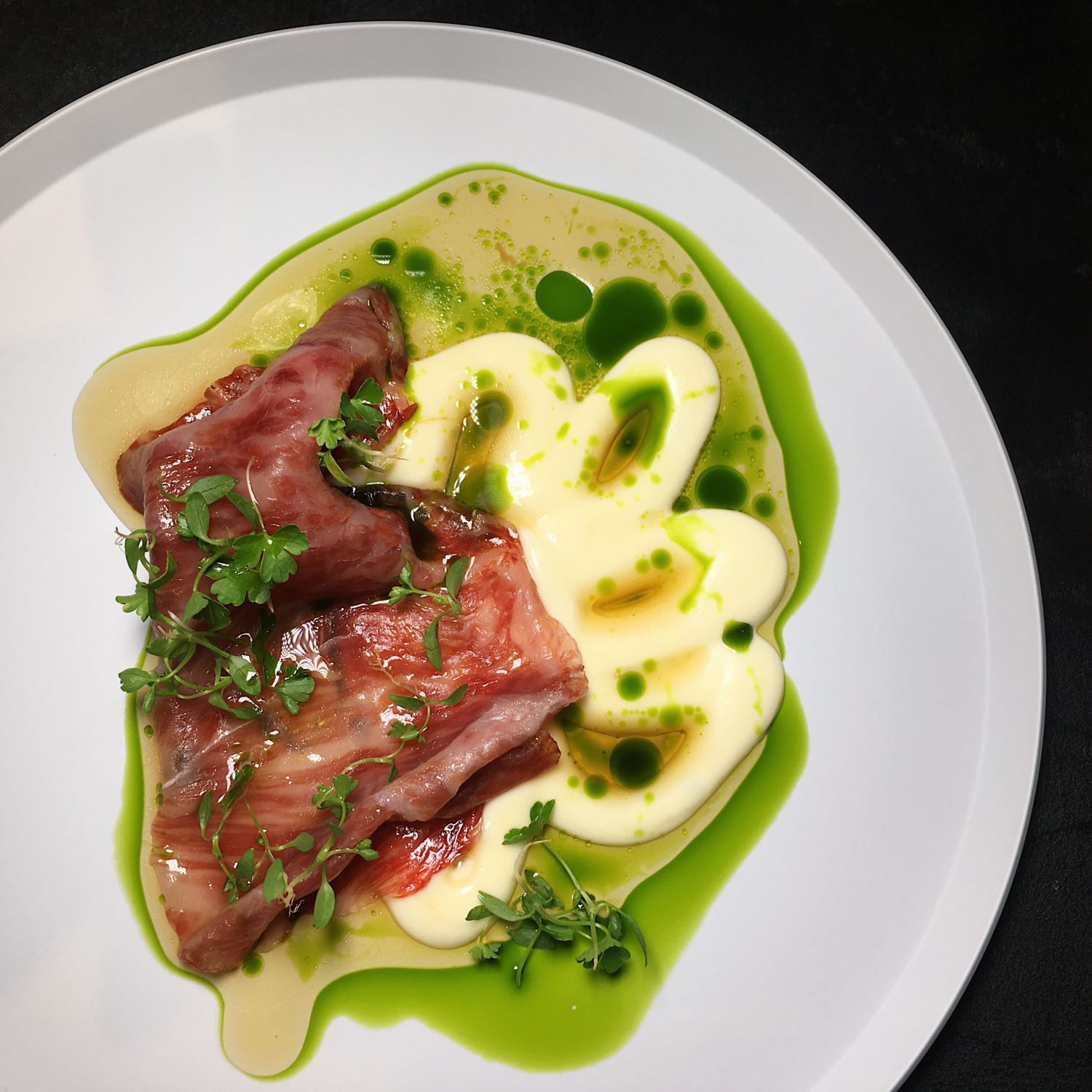
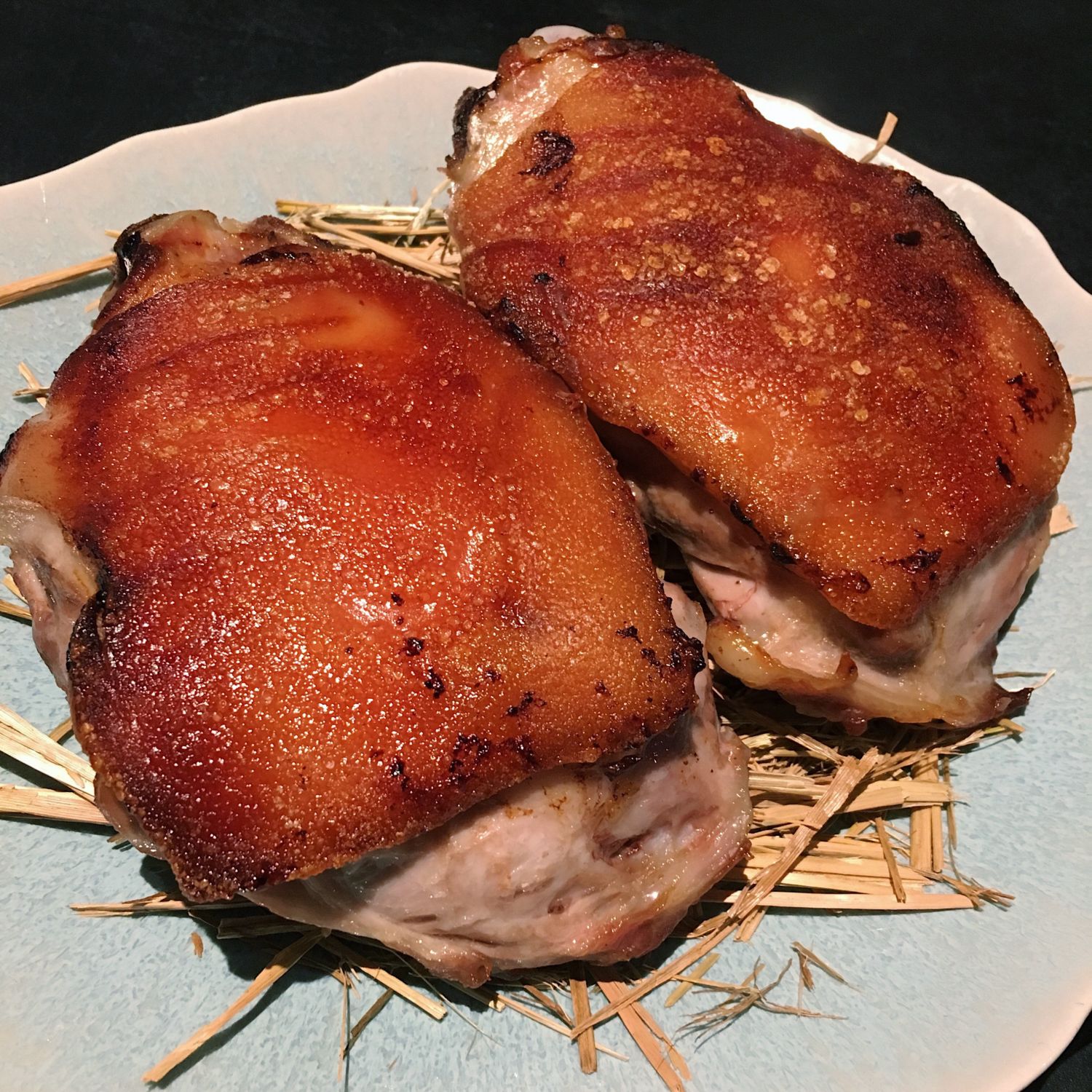
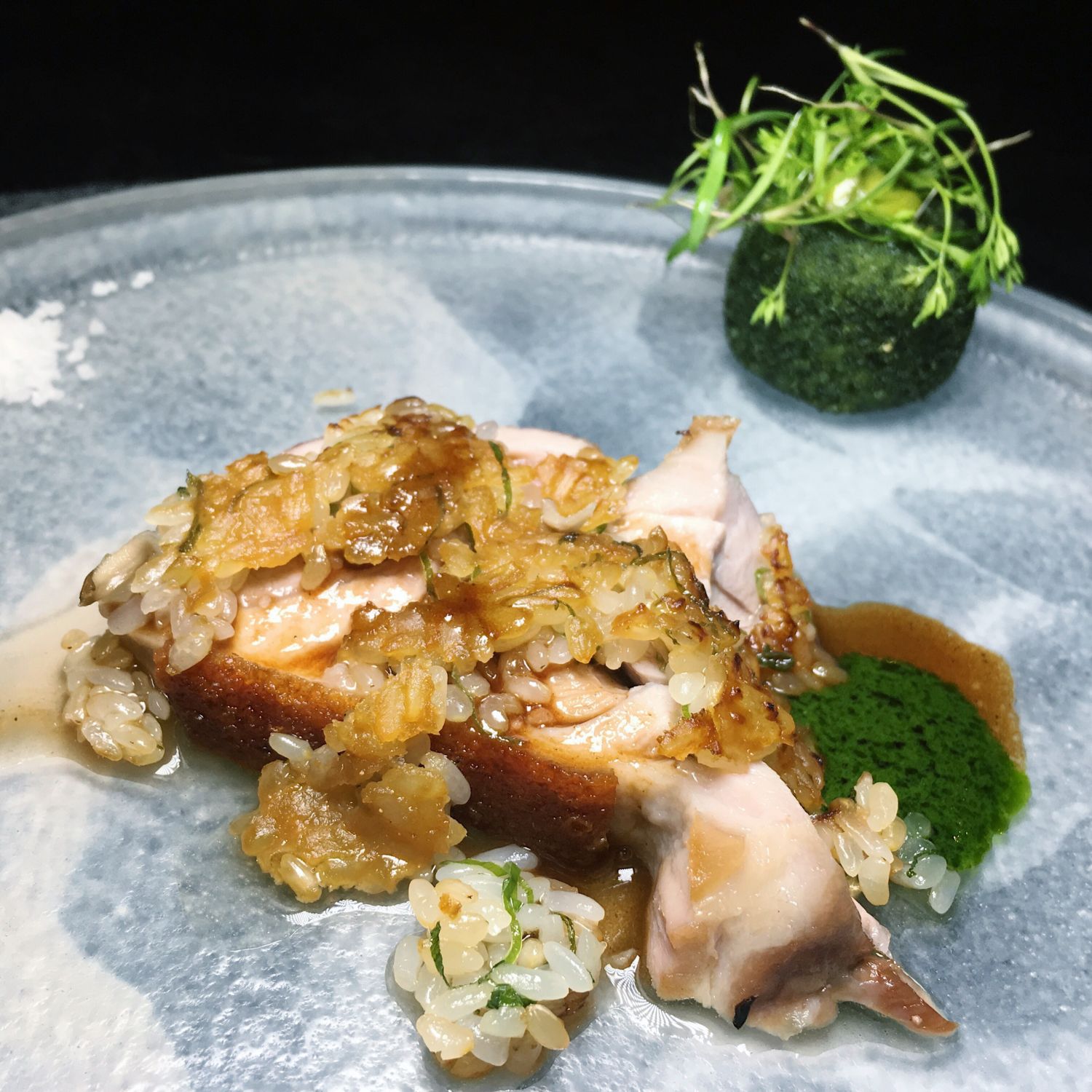
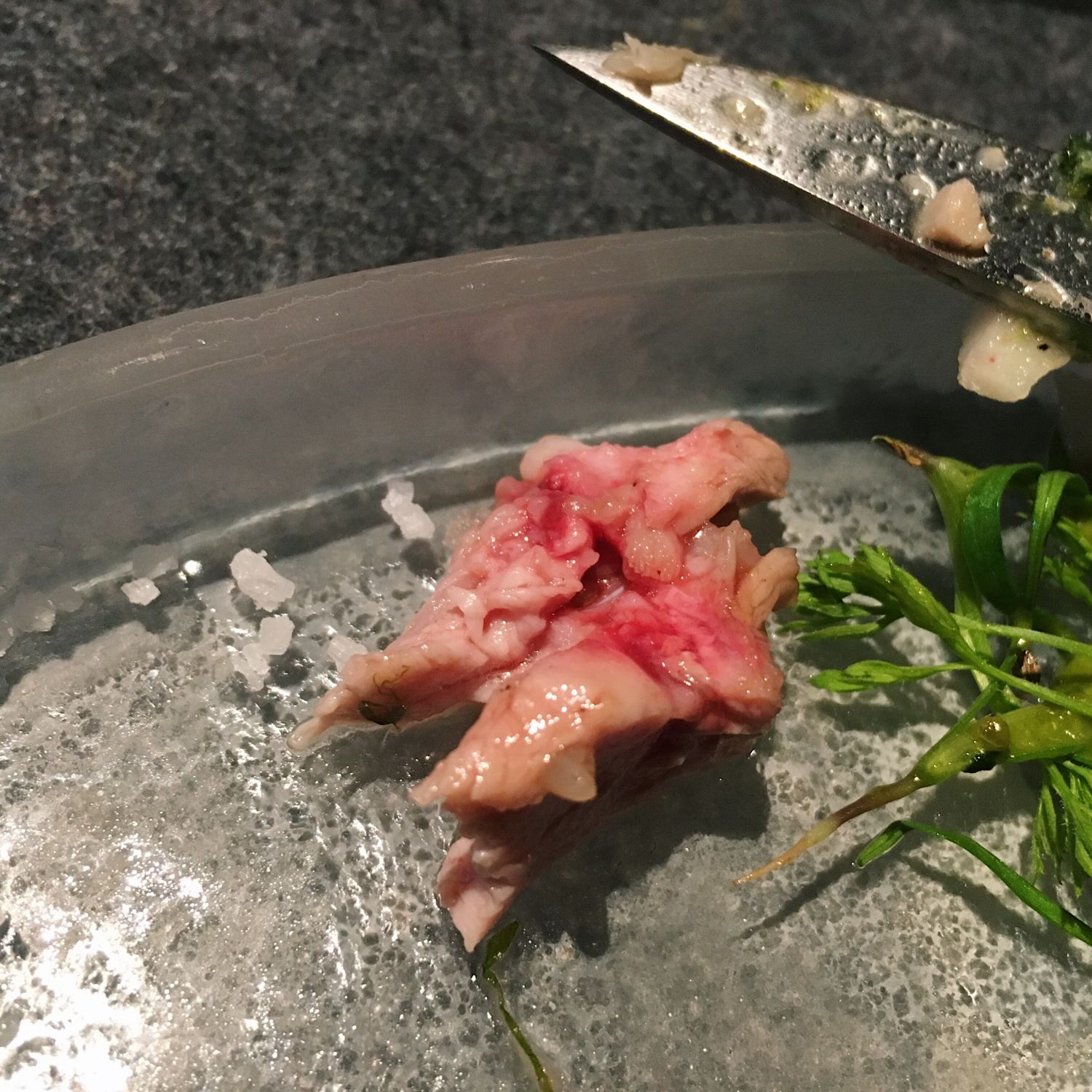
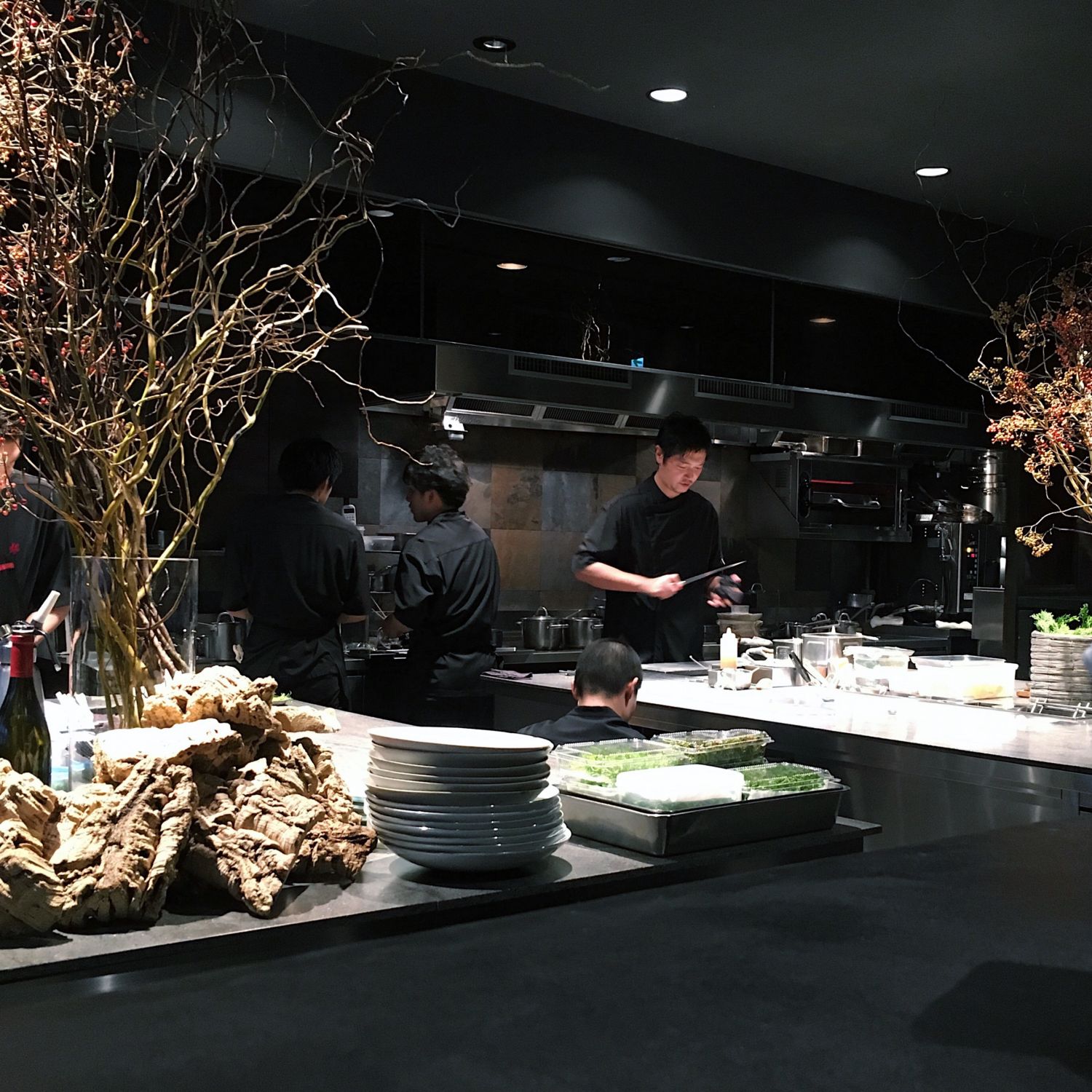
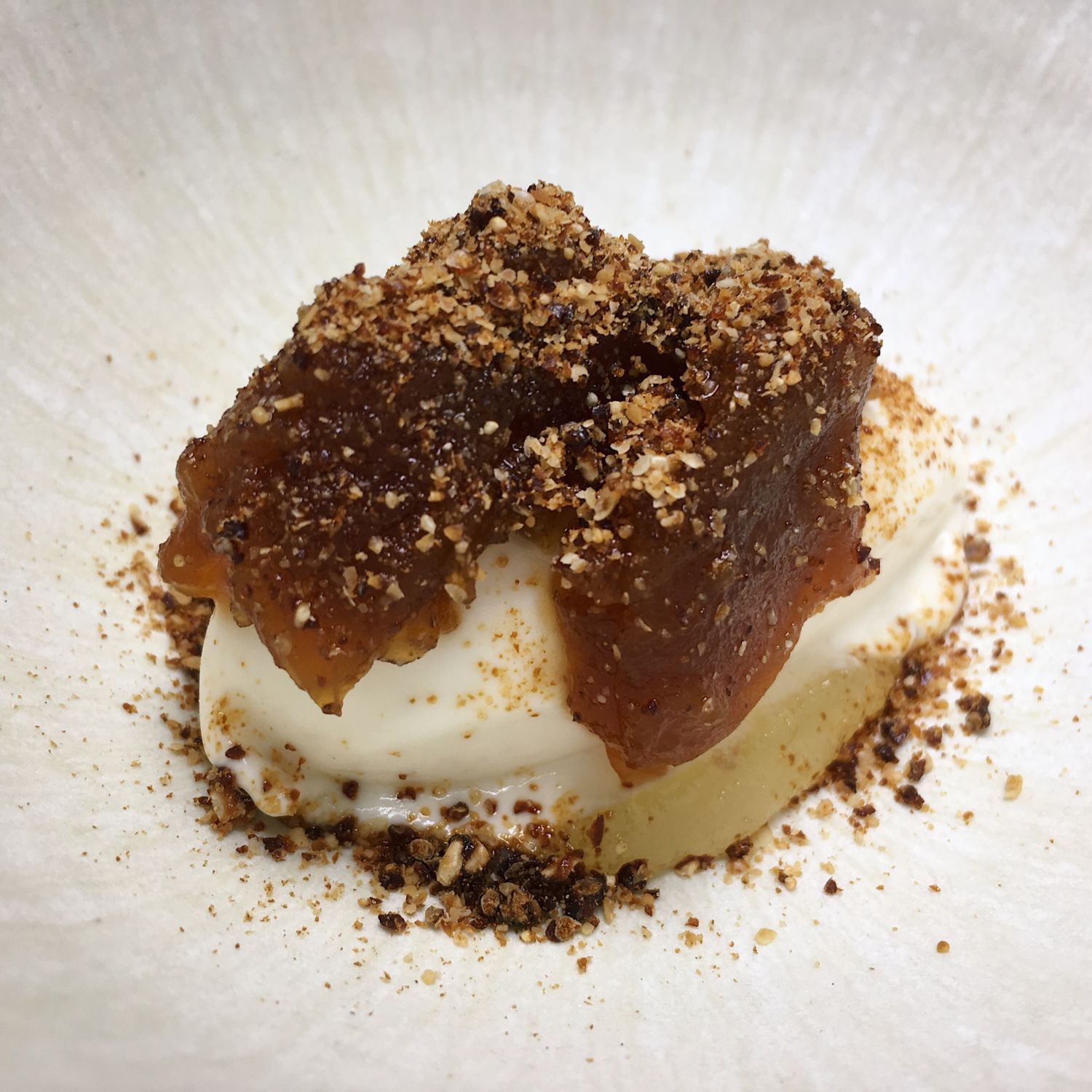
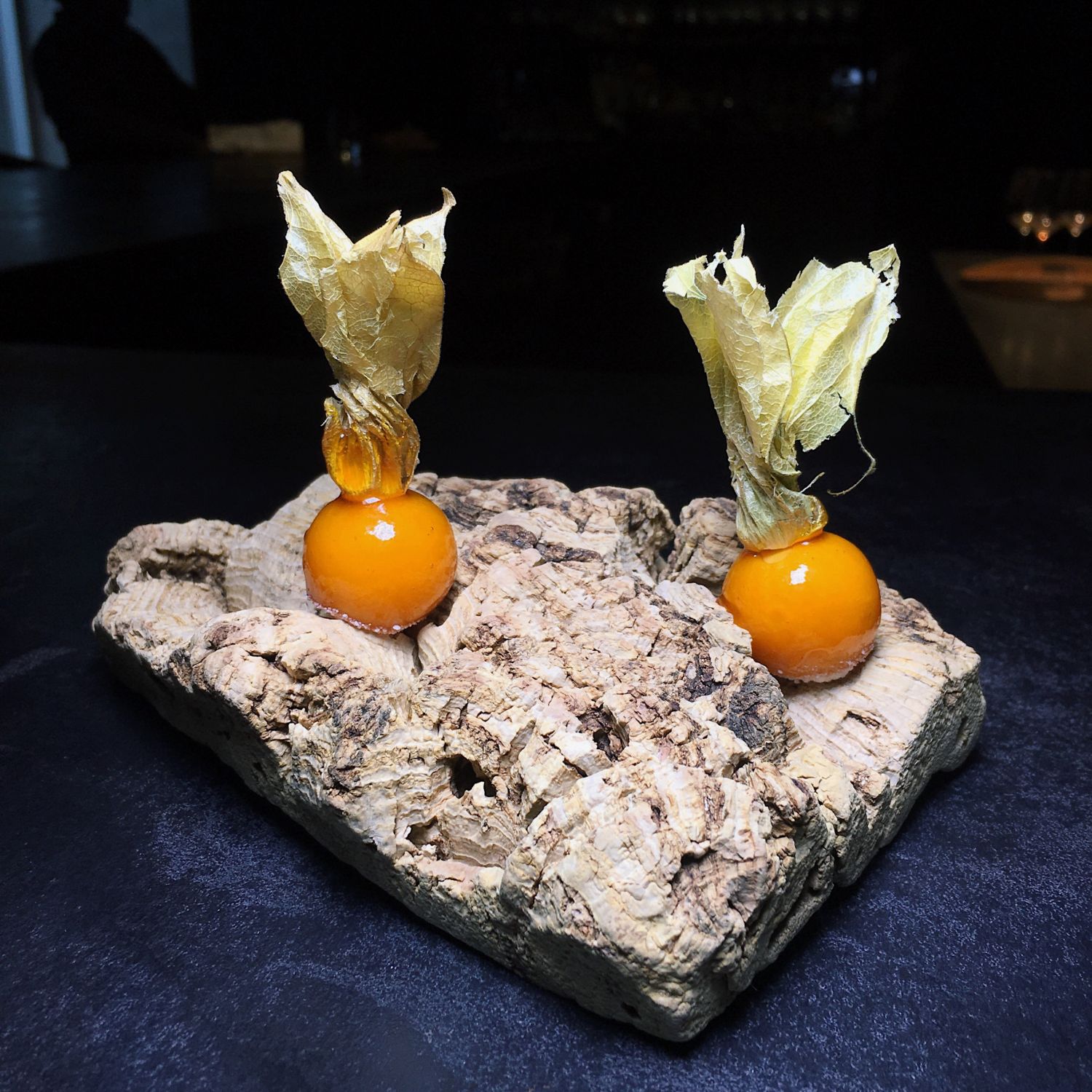
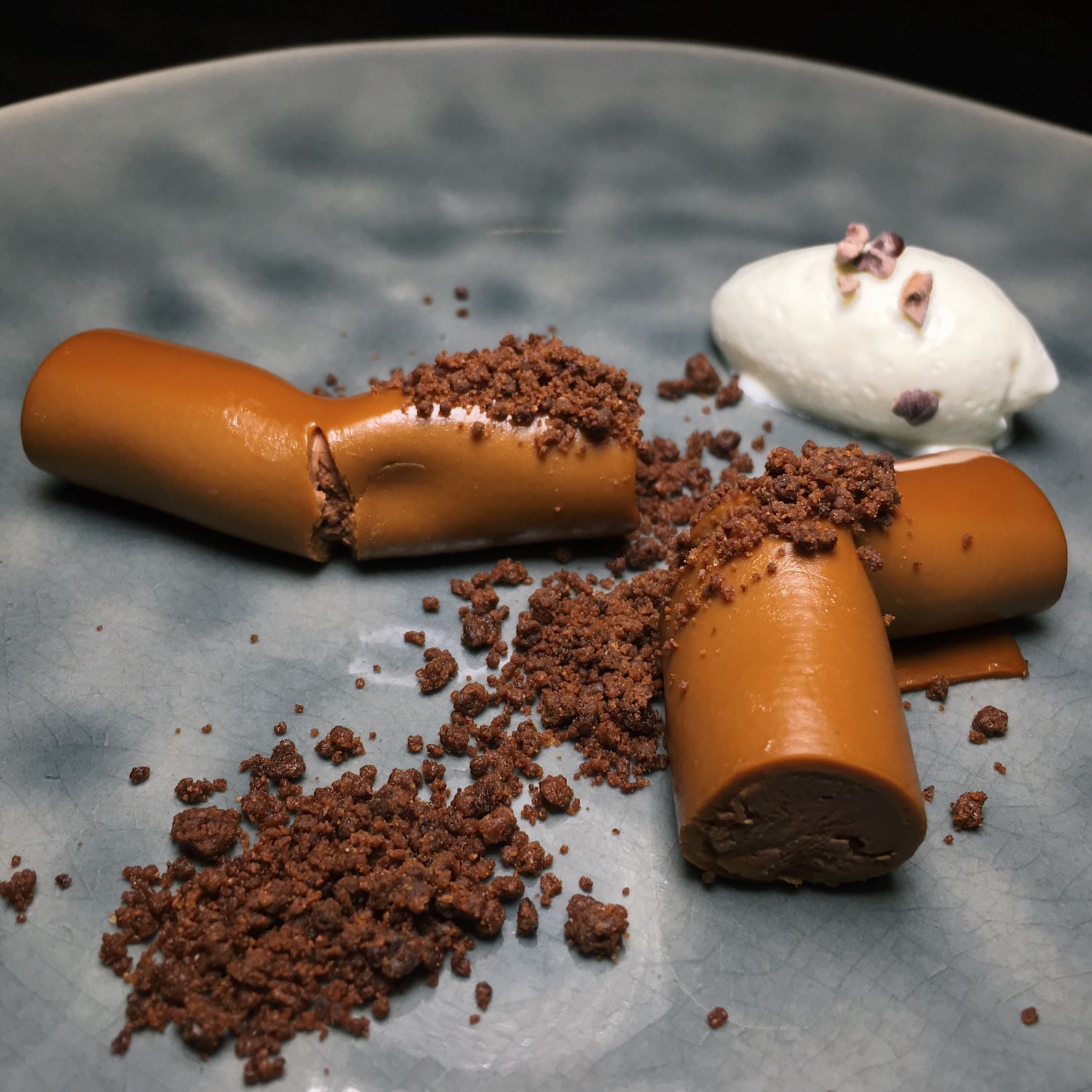
Florilége
Seizan Gaienmae B1F, 2-5-4 Jingumae,
Shibuya-ku, Tokyo
Nabeno-Ism (French, one-Star)
Tokyo Michelin Guide Description: The owner-chef opened this restaurant after spending many years as the Japanese chef at Joël Robuchon Tokyo. The concept is a fusion of traditional French and local Komagata cuisine. The set menus tell a story based on the idea of a ‘journey’ – everything is Japanese in its presentation and mindful of local characteristics. These one-of-a-kind dishes blend the cultures of Edo and France.
Chef: Yuichiro Watanabe
Price:
Lunch = menu ¥10,000
Dinner = menu ¥20,000
Nabeno-Ism is a restaurant in Asakusa which occupies a four-storey building overlooking the Sumida river. Helmed by the very likeable and approachable Yuichiro Watanabe, who is Joel Robuchon-trained, the dishes left the deepest impression in terms of concept, taste and presentation. It felt the most like a Michelin star restaurant, and made for the best gustatory fantasy experience. Nabeno-Ism was my personal favourite of the four restaurants.
Little details heighten the luxury of the meal, from the special material of the rather pretty menu to the gold flakes on top of the sea urchin in the buckwheat dish as well as on the tart in the dessert course. We had our lunch in the semi-private room on the third floor, and the other guests in the room were salarymen entertaining visiting guests.
The pigeon with compoted eggplant, apricot, wrapped ashitaba, and apple in a bamboo mat was the most beautifully-plated dish from the four restaurants, with the pigeon being incredibly tender and the grainy, pasty eggplant miso possessing an intriguingly delectable umami. The scallop from the ensemble of scallop and grenouille, Japanese mushroom and radish, flavoured with parsley butter and chives was gloriously fresh, sweet and possessed a youthful bounce, while the delicious frog had a chicken-esque softness. Even the mushroom and lotus root elements from the pan-fried Japanese beef fillet with Japanese pepper seasoning in consomme with madeira possessed a most Nassim Hill-esque poshness and personality in its buoyant French fry aspirations respectively.
I felt impressed, supremely pampered and pleased.
The charming and humorous Chef Watanabe greeted us on the ground floor as we were leaving. He enquired about our experience at Nabeno-Ism, spoke a bit in French and gave us a bag of cookies each for the road.
I genuinely felt rather bummed when the meal ended.
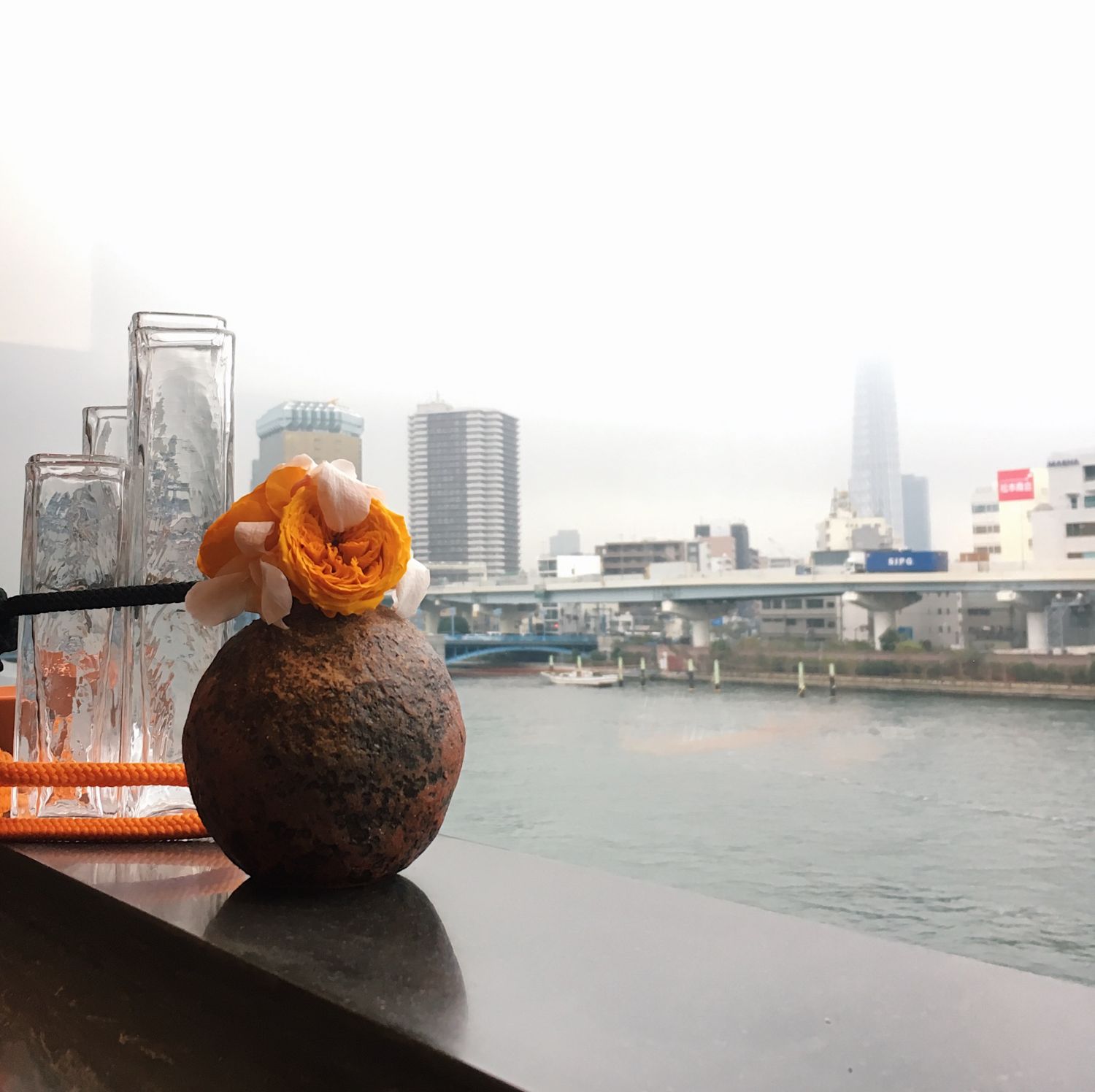
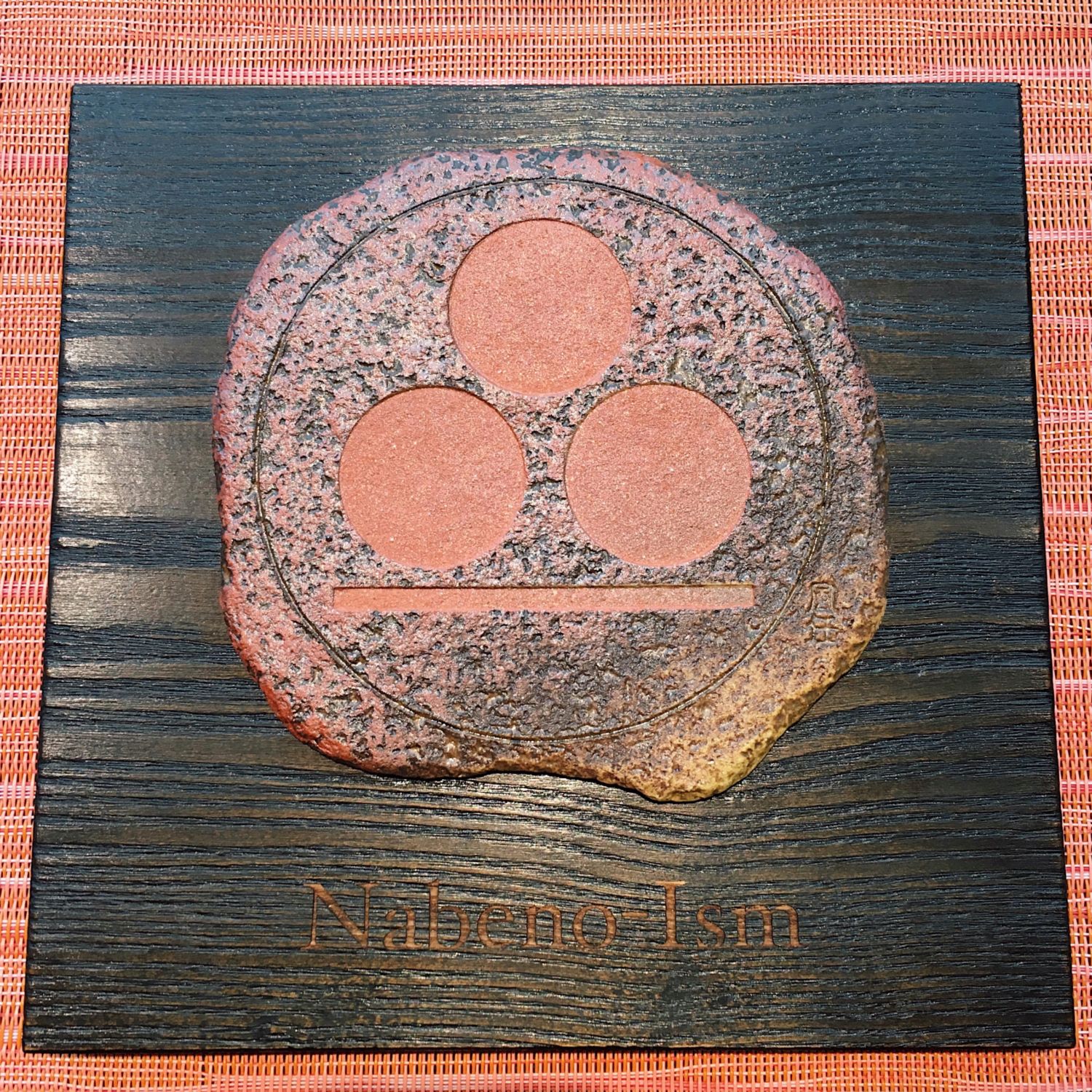
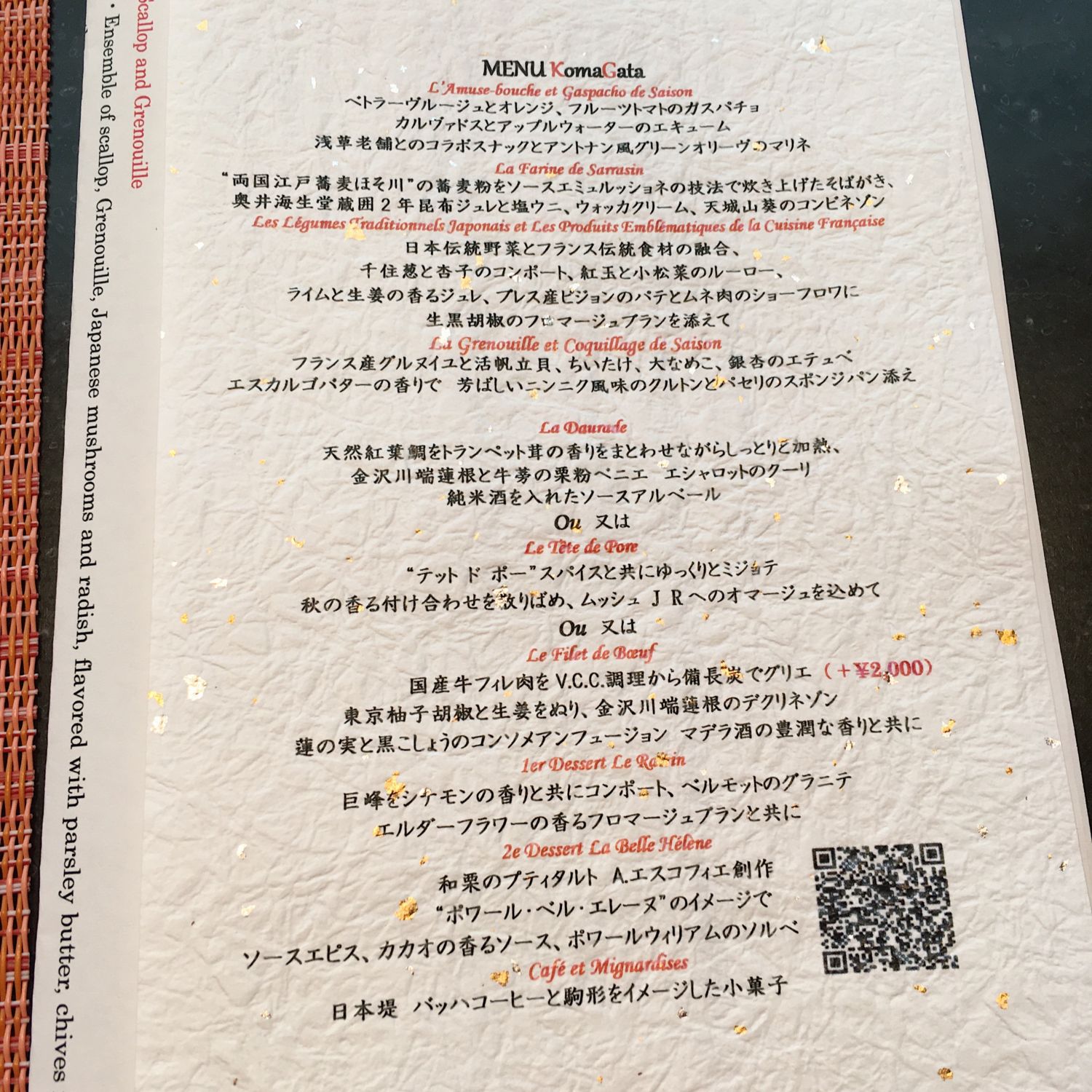
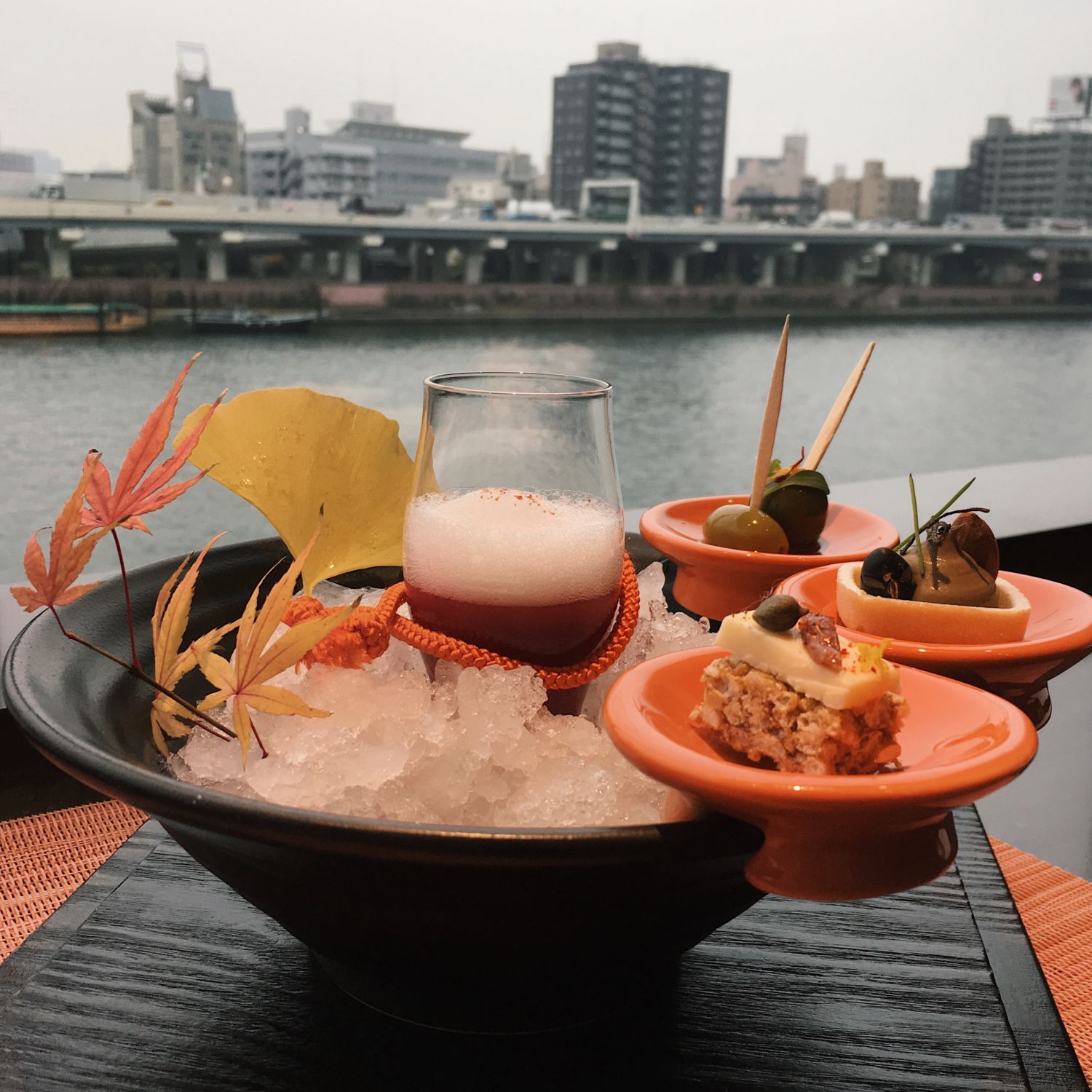
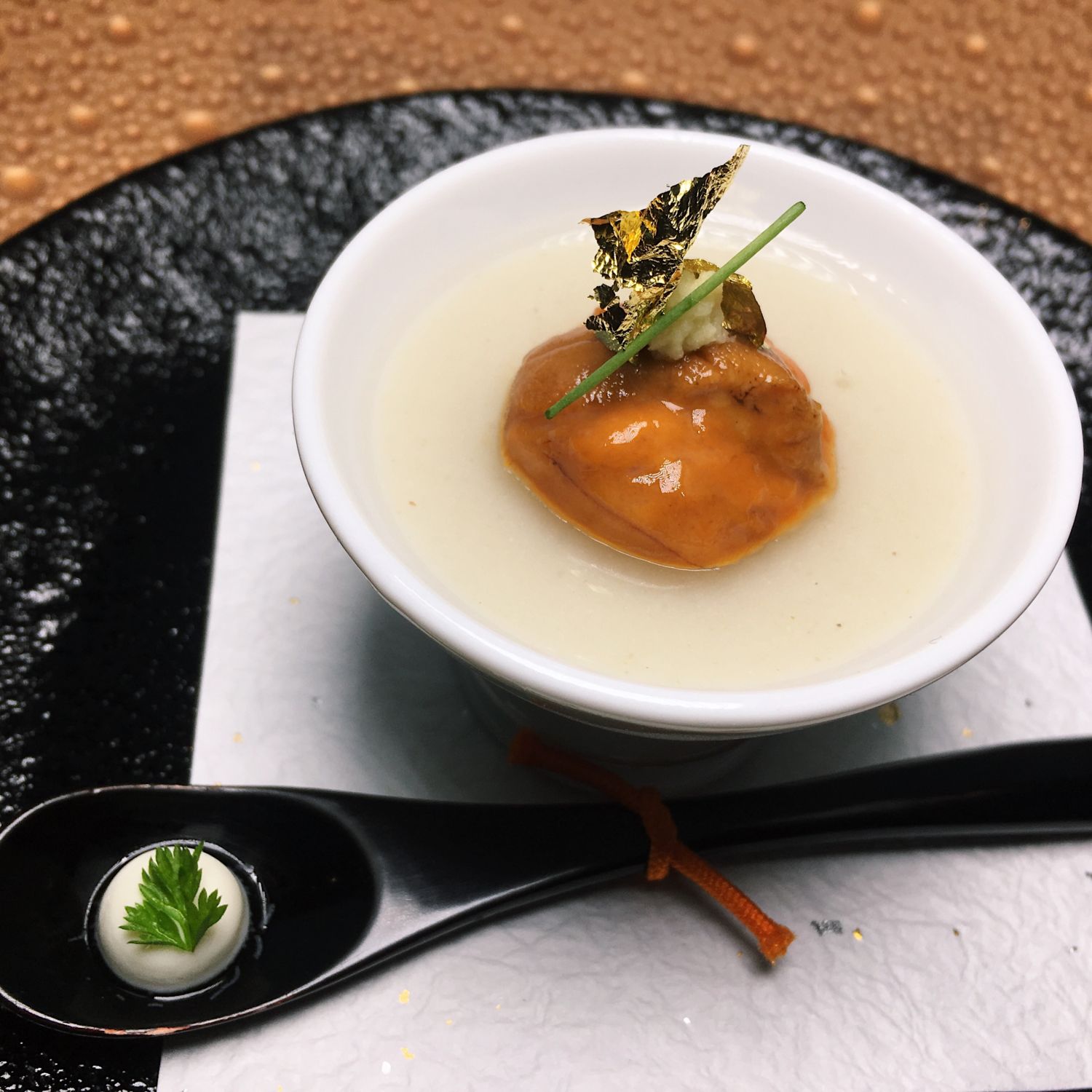
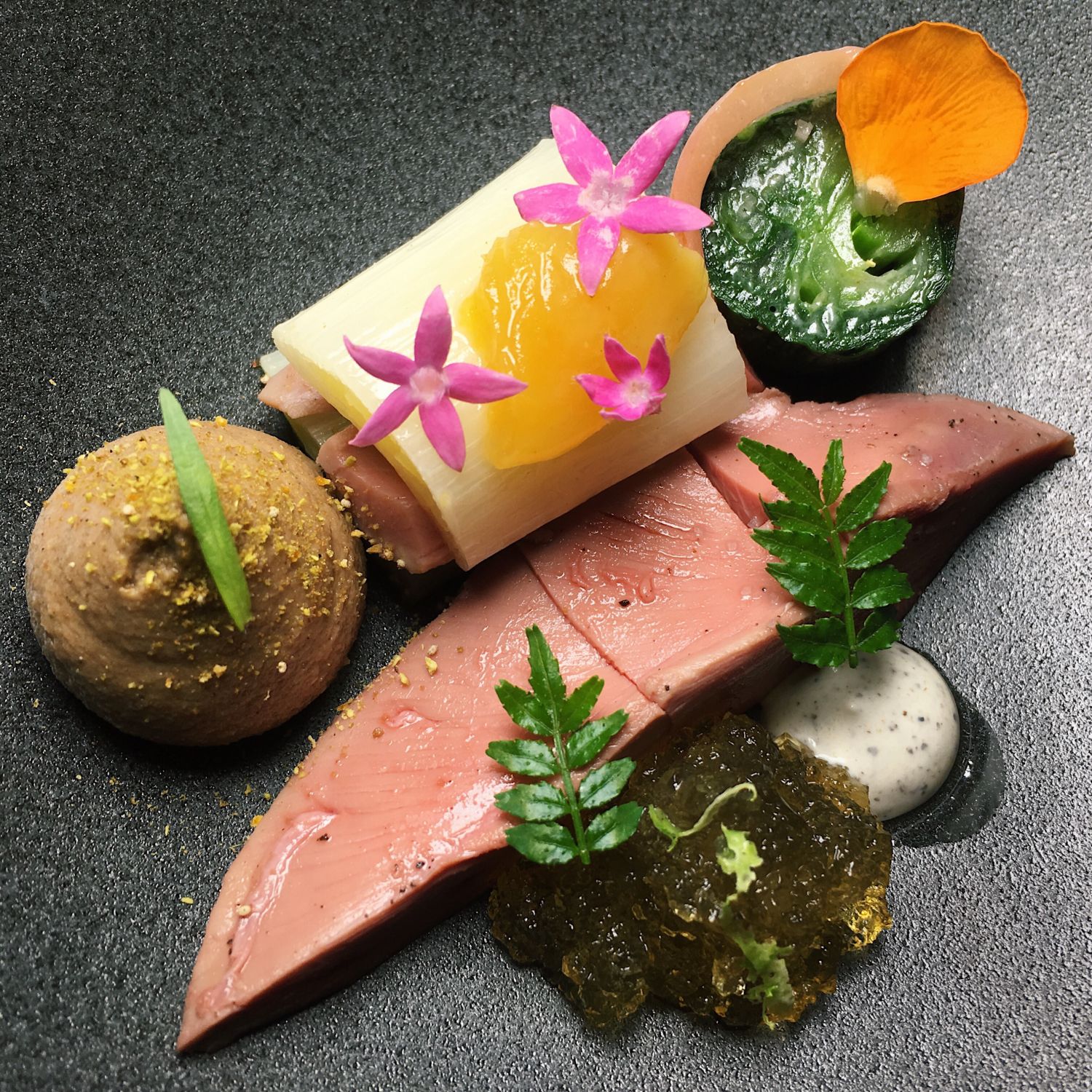
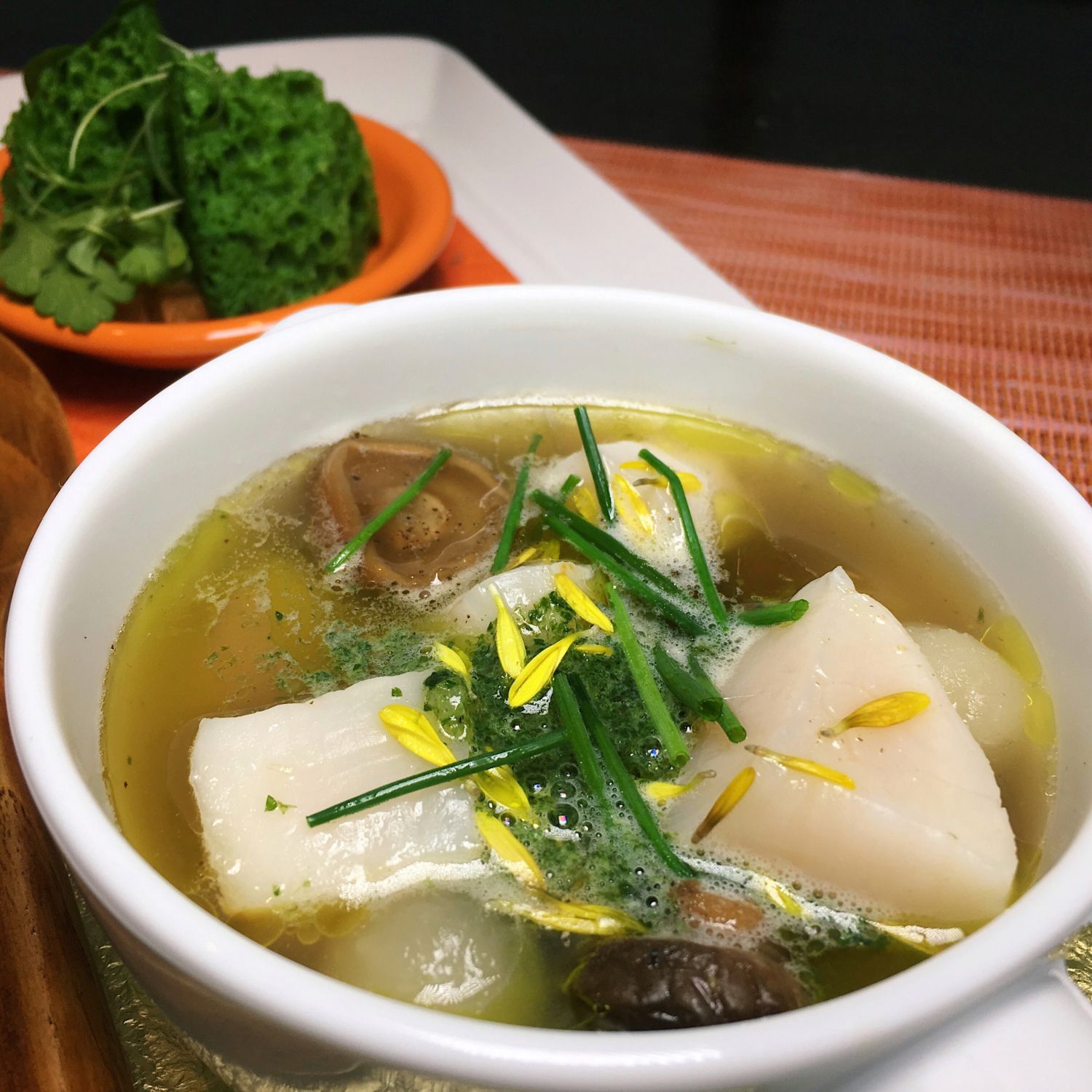
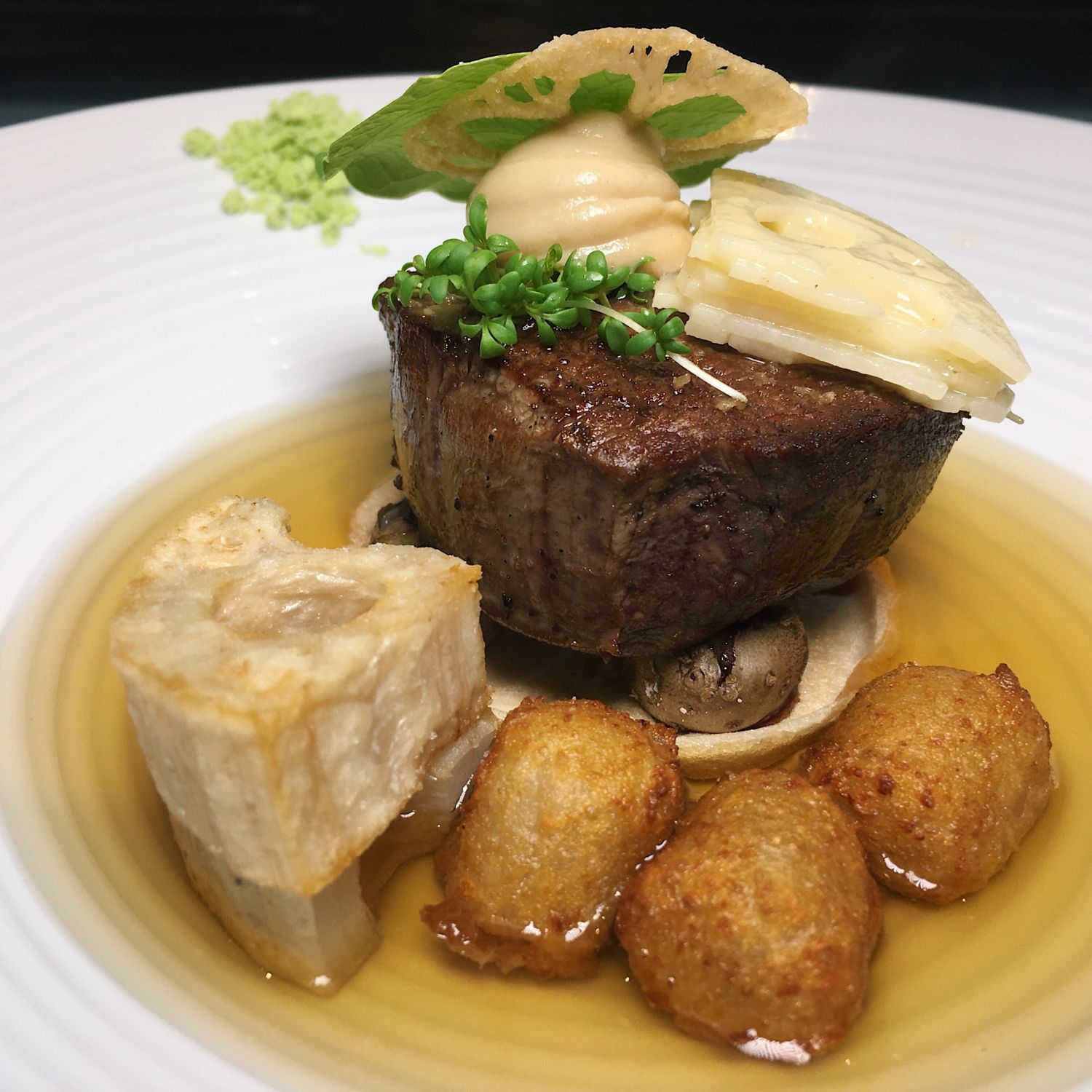
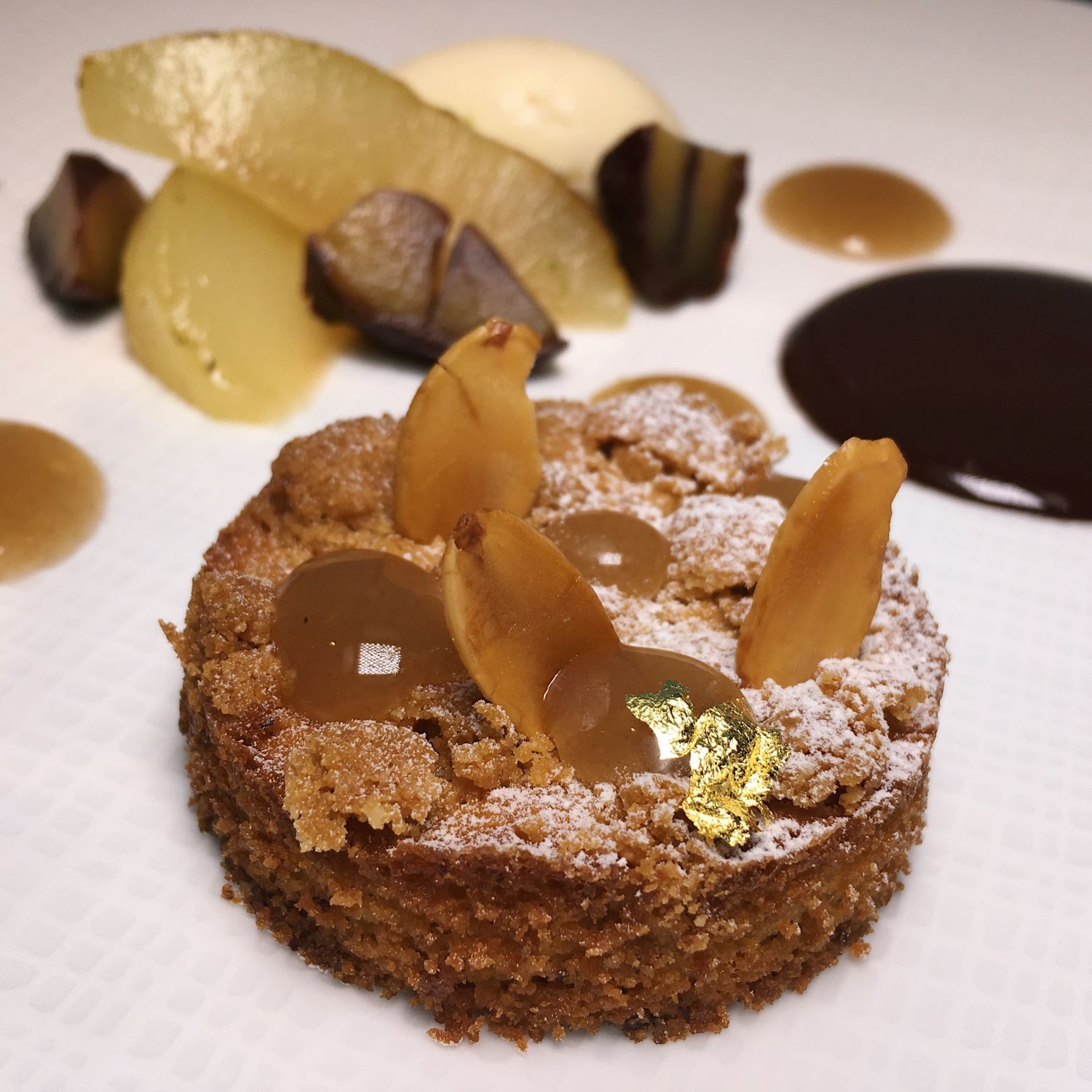
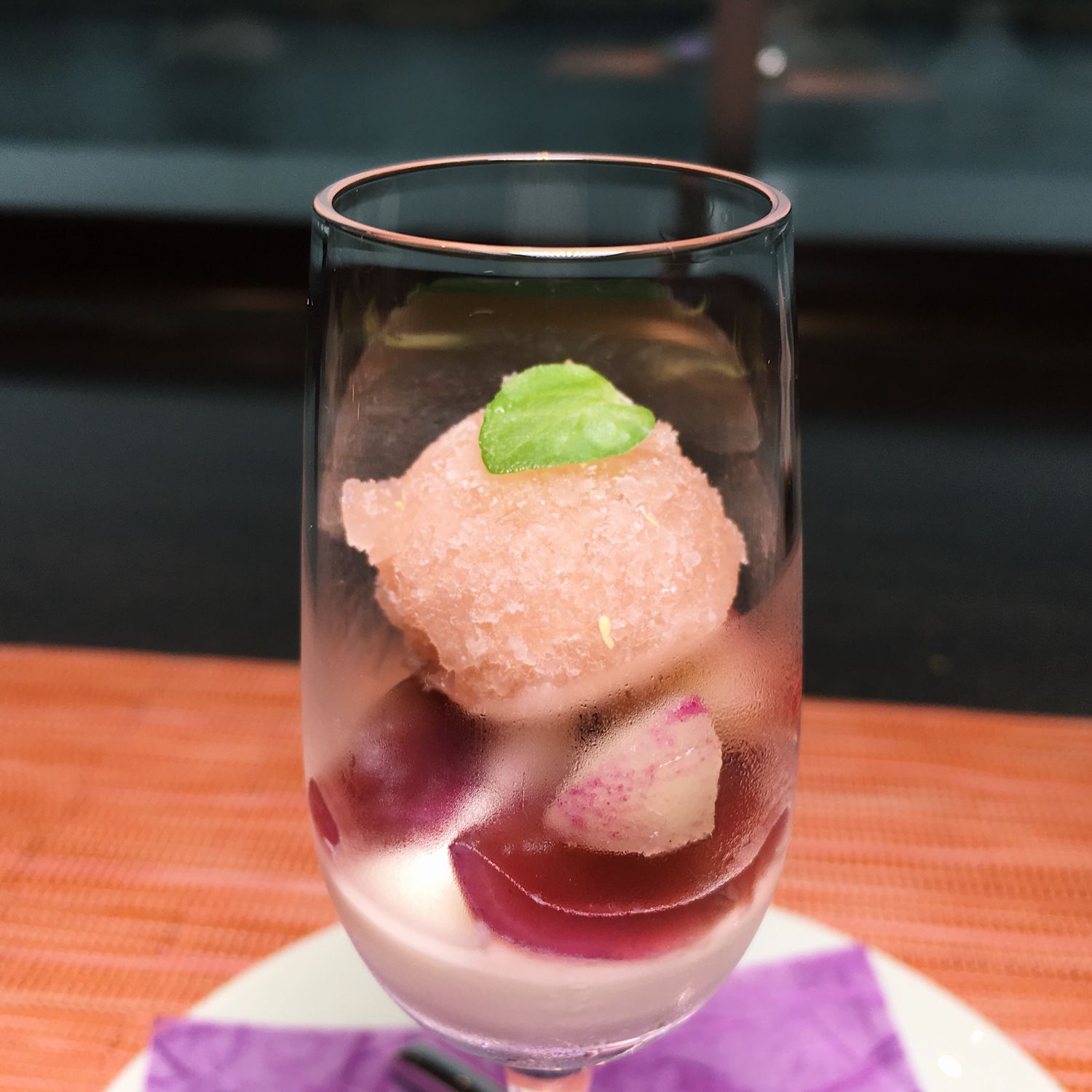
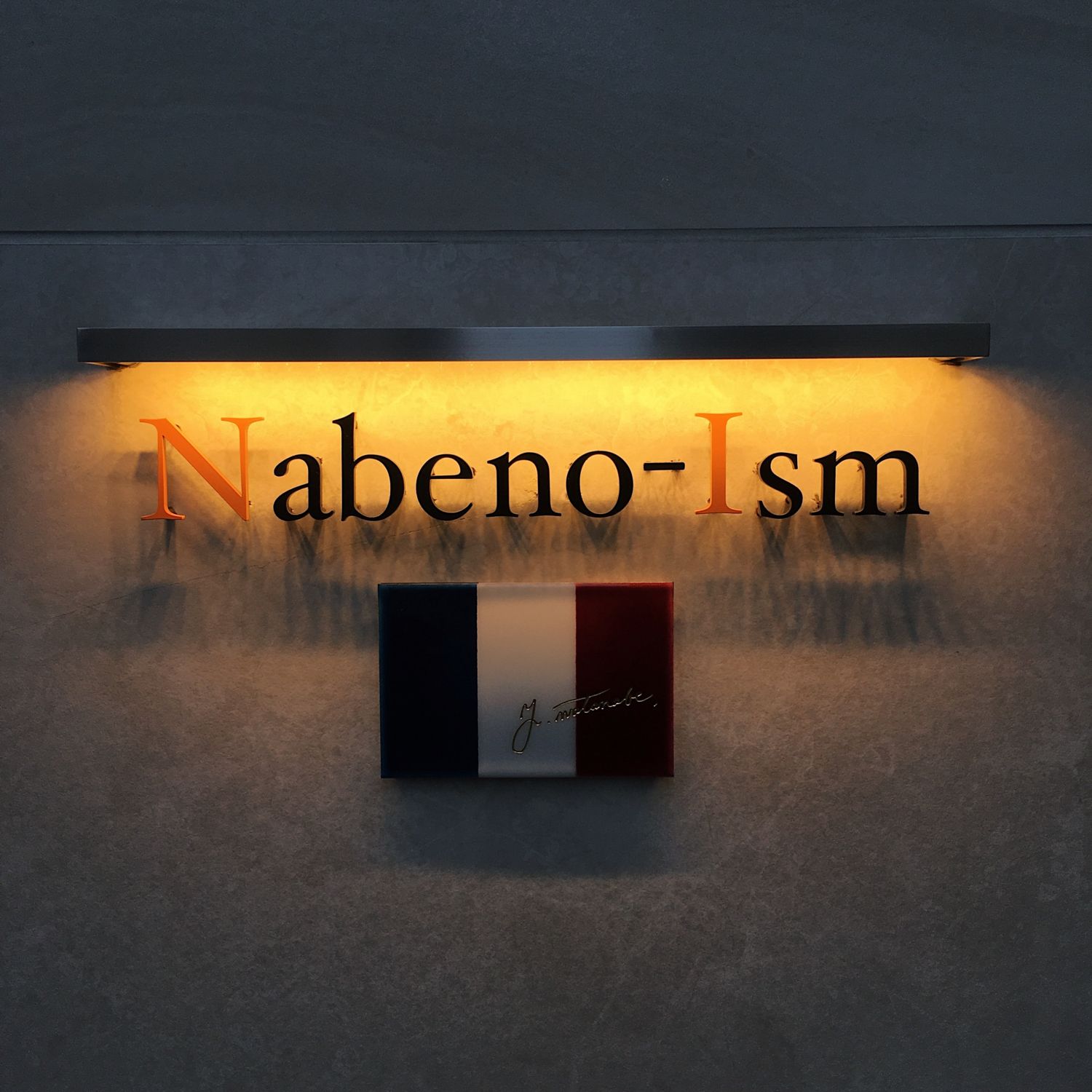
Nabeno-Ism
2-1-17, Komagata, Taito-ku, Tokyo
Sublime (Innovative, one-Star)
Tokyo Michelin Guide Description: The owner-chef learned the basics of traditional French cuisine in Japan; at Astrance in Paris, he learned how to combine and cook ingredients just right; and in Denmark, he learned about beautiful presentation. The set menu starts with novel appetisers and the memorable meat and fish dishes come with classic sauces while incorporating Northern European elements. They are lightly seasoned but have presence – and portions are generous.
Chef: Junichi Kato
Price:
Lunch = menu ¥4,860-12,960
Dinner = menu ¥12,960
Sublime was the only restaurant which expressly stopped me from using my photography equipment, which would explain the difference in the quality of pictures below. It was a pity, because several of the dishes were vibrantly coloured and the photographs would have likely turned out well.
The restaurant was the most understated and nondescript of the four in terms of design and decor, with the average guest being one half of a couple.
Despite looking fairly plain, the Gibier consomme (wild boar, venison, duck) was memorably good, with the thick and full-bodied consomme assertively caressing the back of your throat and coming across like a herbal chicken soup meets pork bone tea. The Seiko crab, from the Fukui prefecture and purportedly only available during the December-January period every year, was happily salty (from all the mating shenanigans?), while the elderflower mousse wore its floral fragrance with pride. Elsewhere, the rocks on the fish-like Wagyu beef tartare made for some very rudely loud crunching action, the mackerel possessed a deep, intense smokiness that served as an unexpectedly compatible bedfellow to the raw sourness of the eggplant, and the well-cooked and plump-fleshed Sea bream with garland chrysanthemum and chestnut played it like a valentine to Cantonese cuisine, with the kuwai (water chestnut) not at all tasting how I thought it might taste. (On a separate note – man, I love Tang Oh so much I want to make Chinese soup babies with it.)
The maître d’ came over as the meal was winding down to enquire how our meal was. After some light conversation, we shared that we had visited a few other Michelin star restaurants, and this was our fourth.
“Which ones?” He asked.
“We went to Abysse, Nabeno-Ism…and Florilège,” I replied. I may or may not have winced at some point.
Very fleetingly, the maître d’s eyebrow twitched slightly. “Florilège. How did you find it? Did you like it?”
I shared an abridged version of my Suckling Pig tale in the most politically correct and neutral manner as was practicable.
“Oh,” he responded sympathetically, with an interesting, almost imperceptible glint in his eyes. He then excused himself and retreated to the kitchen, and from the corner of my eye I observed him deep in conversation with the very earnest Chef Junichi Kato, who briefly looked over at our table.
As we were leaving, Chef Kato came to greet us at the door. He remained at the door until we were gone, and we had to turn a corner and double back to capture the shot of the entrance below.
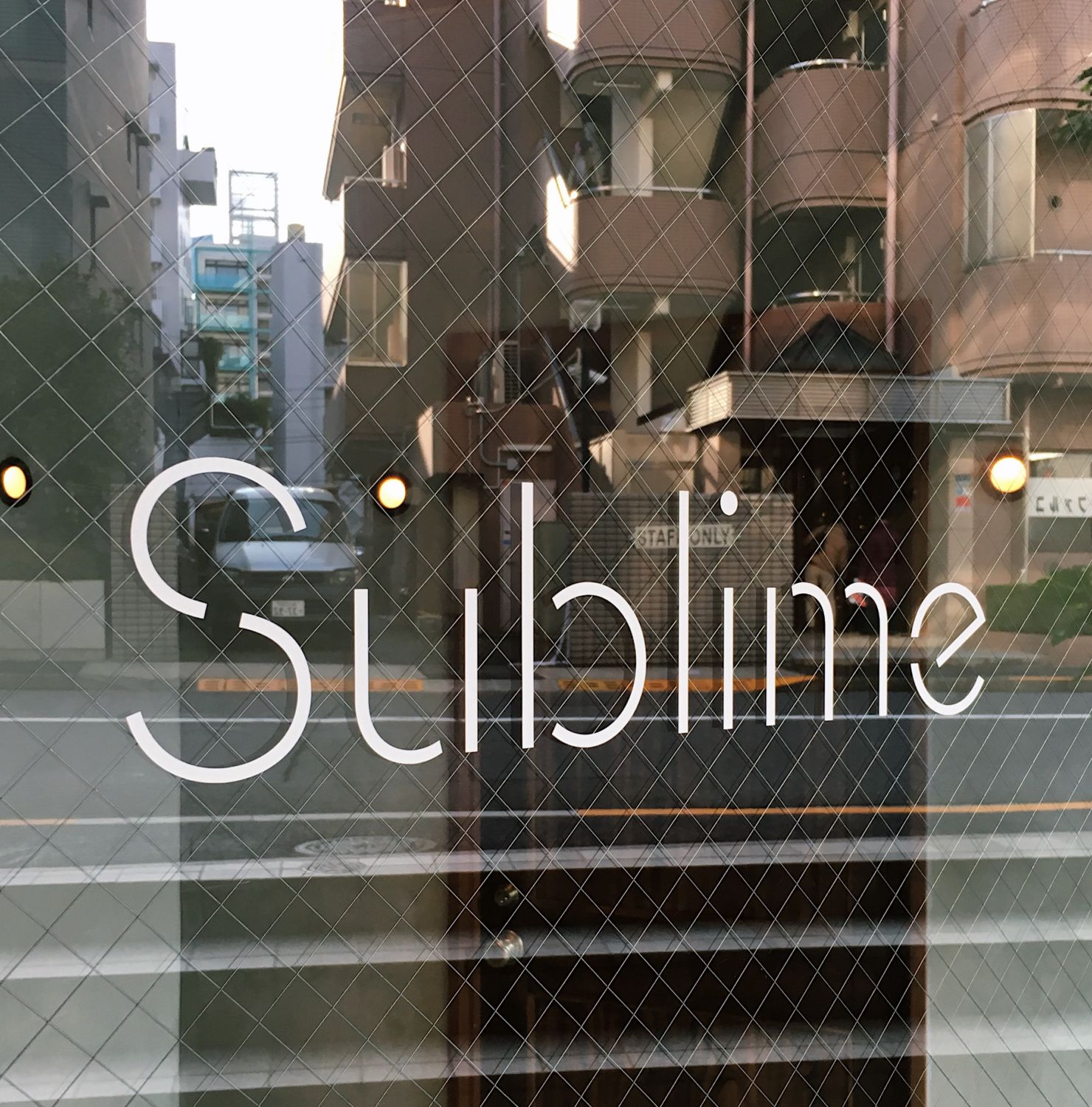
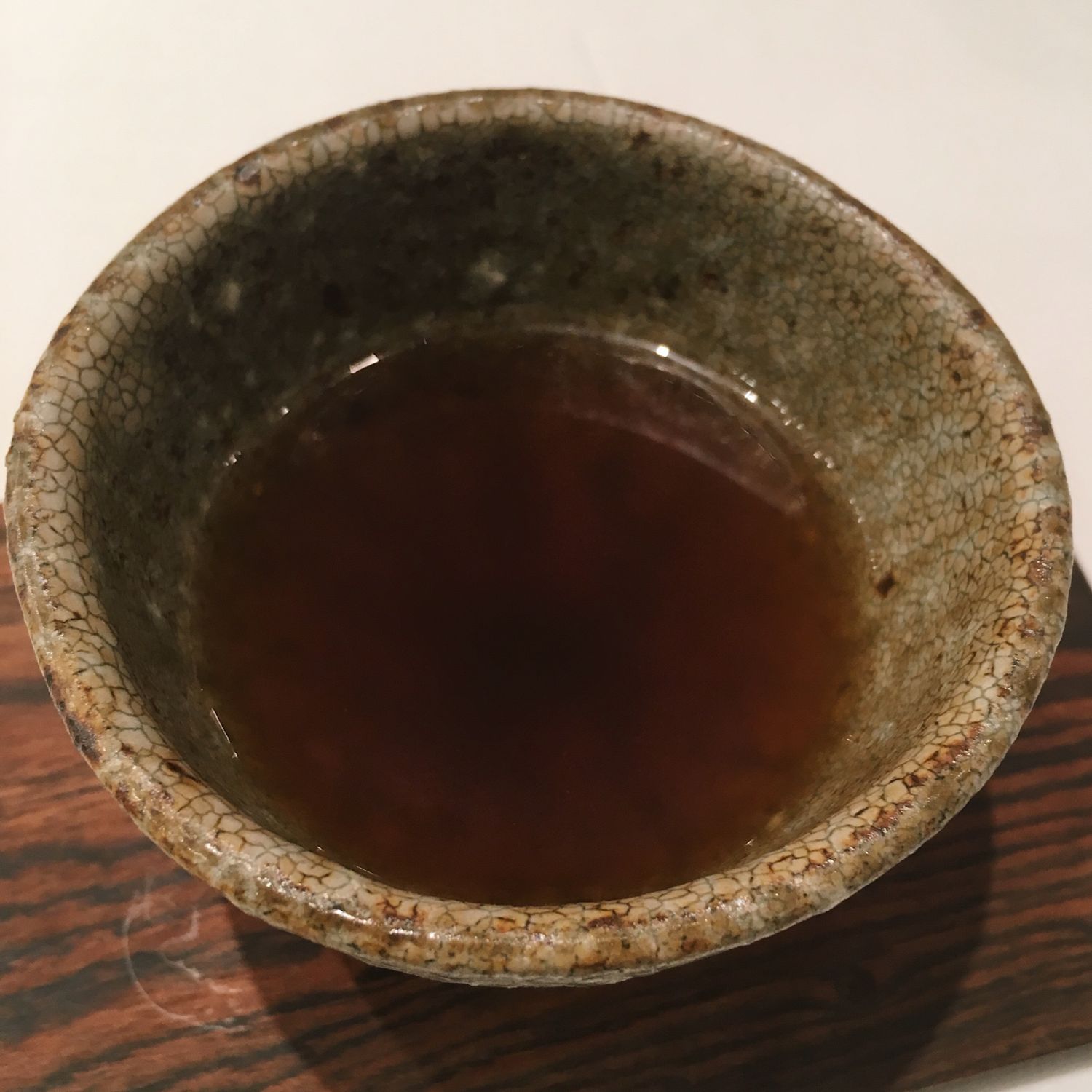
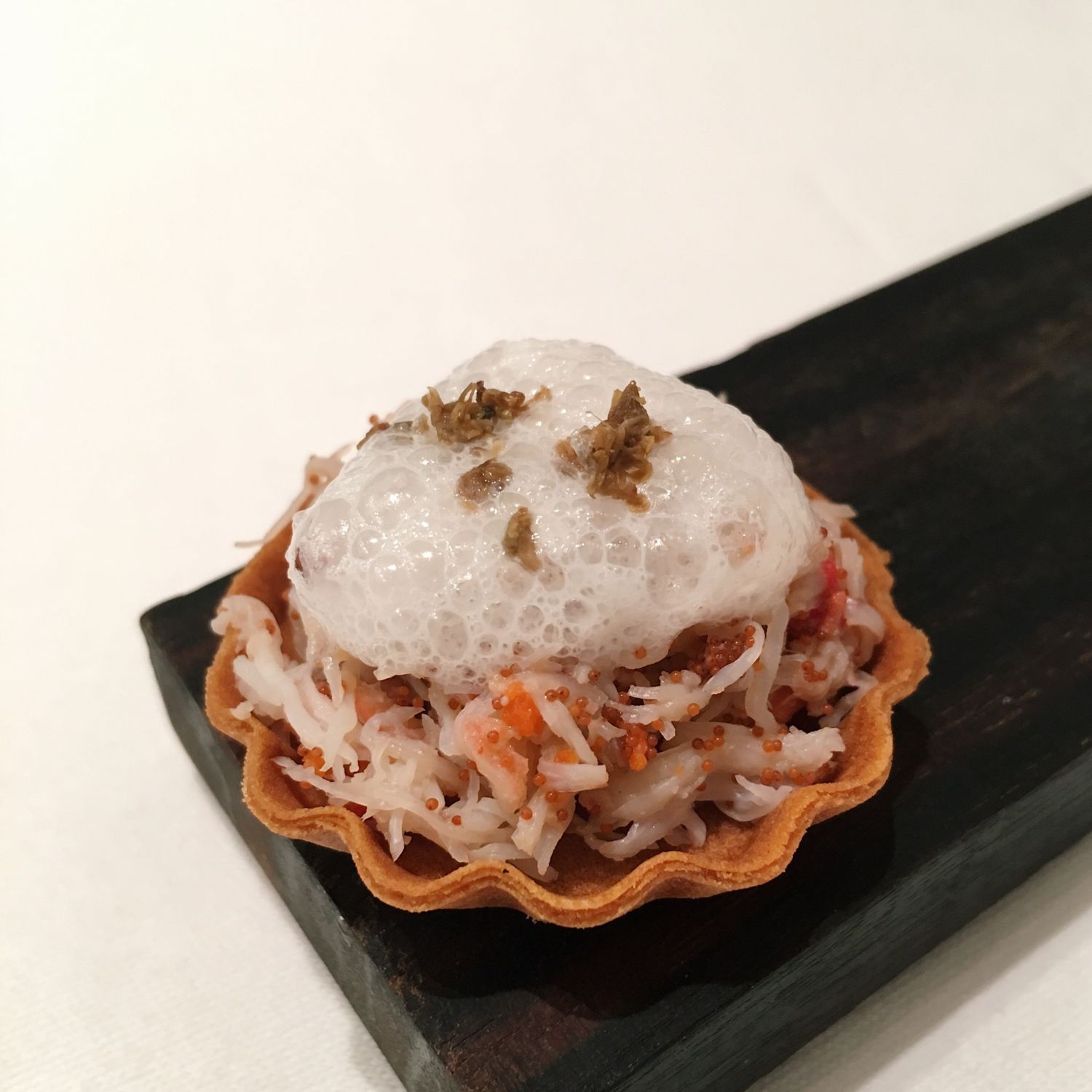
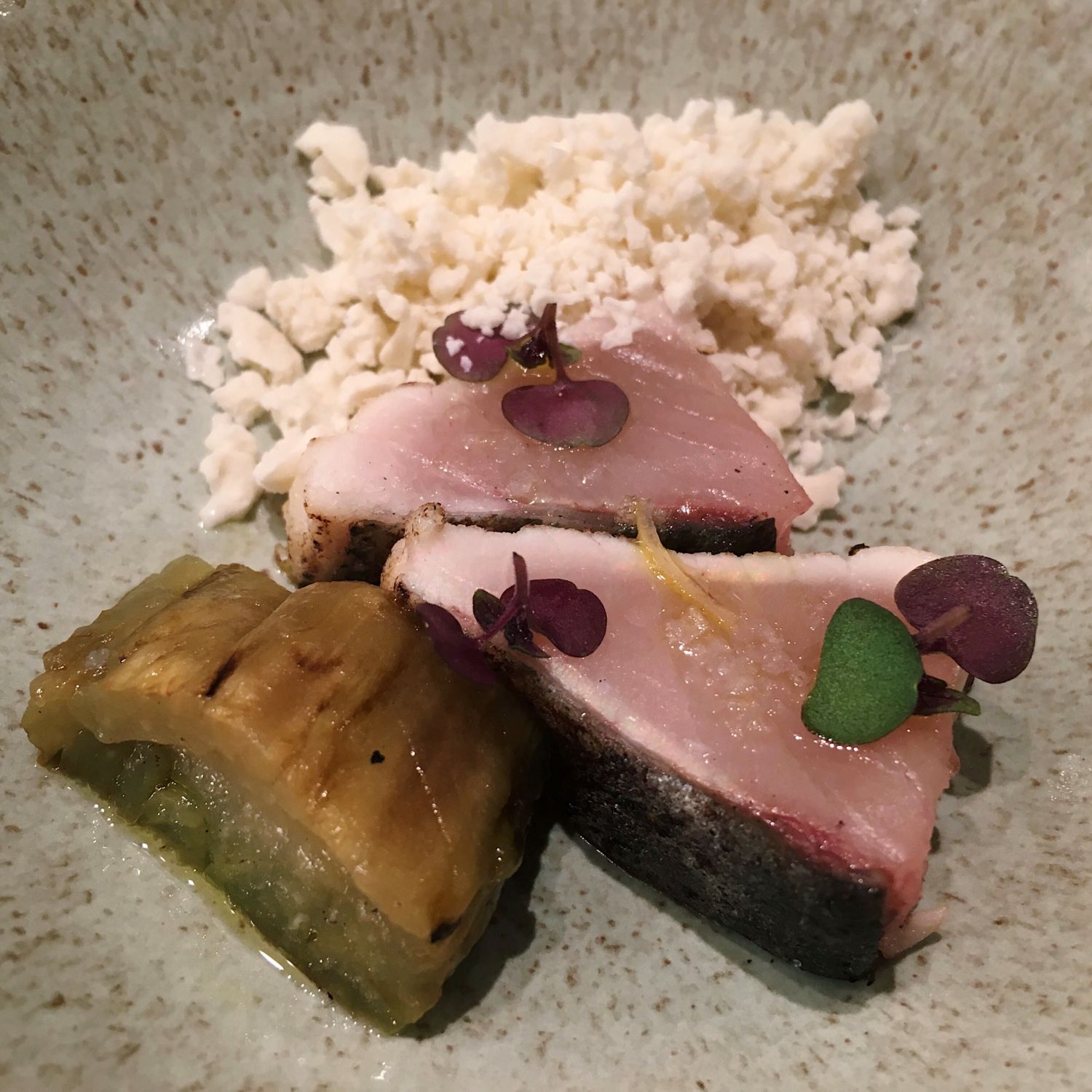
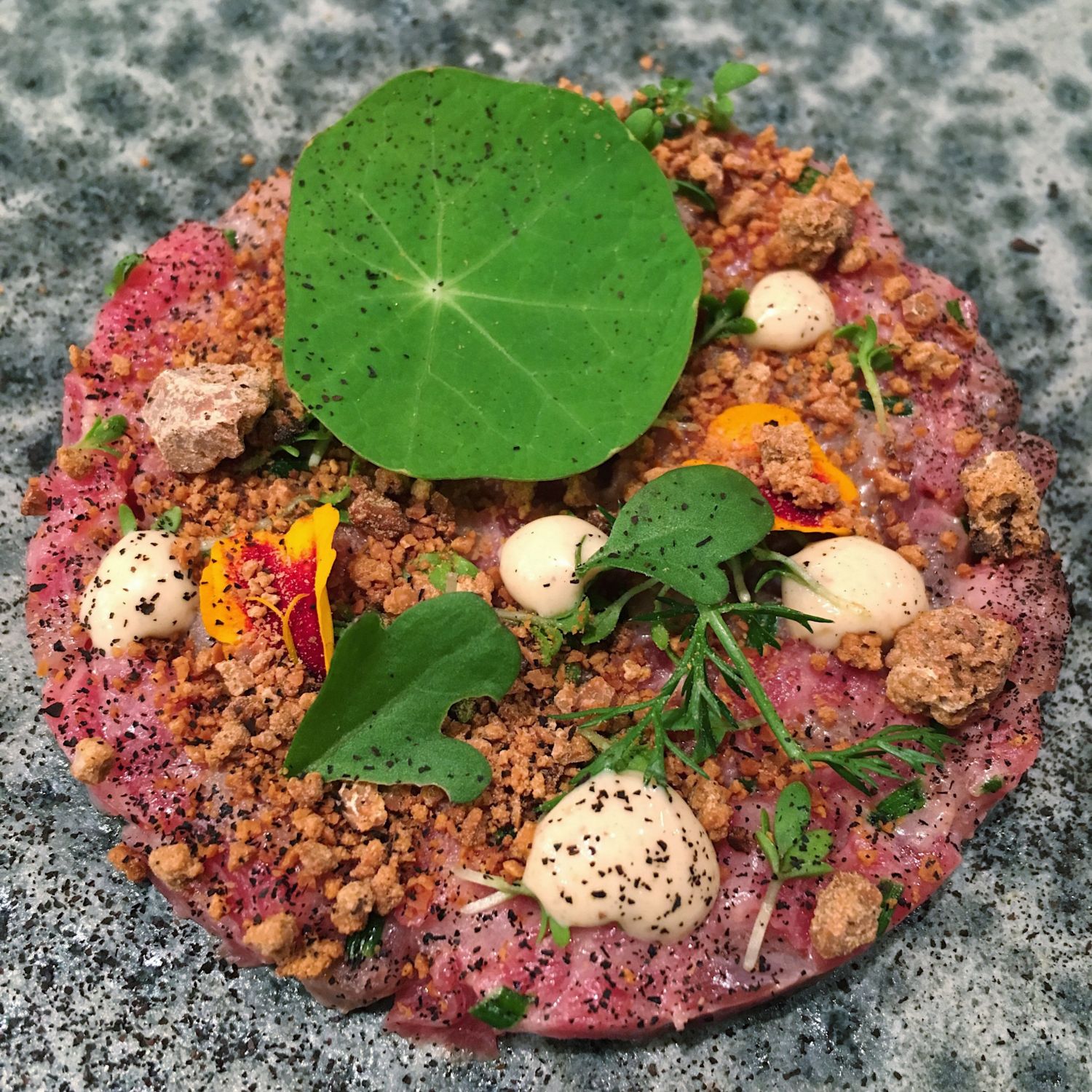
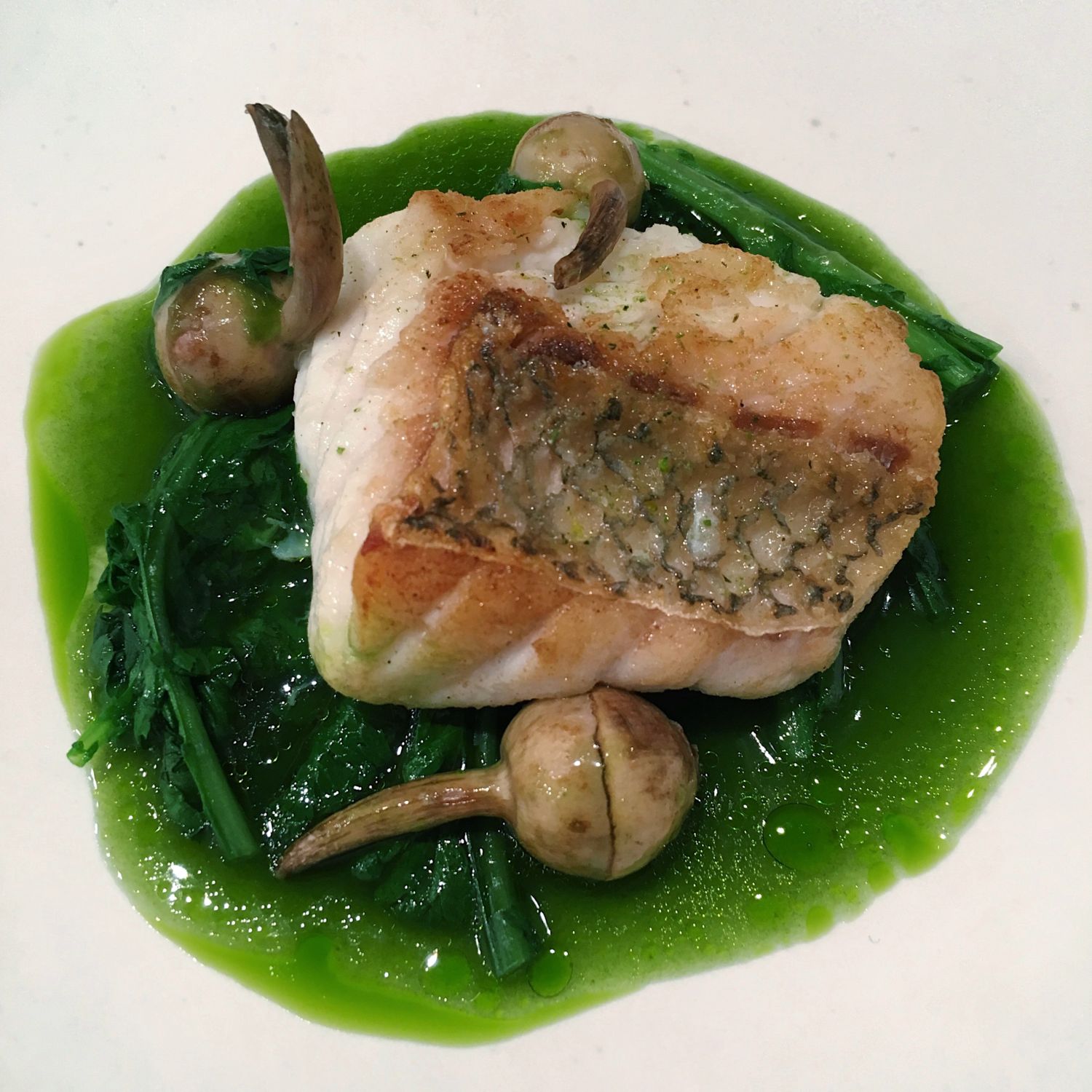
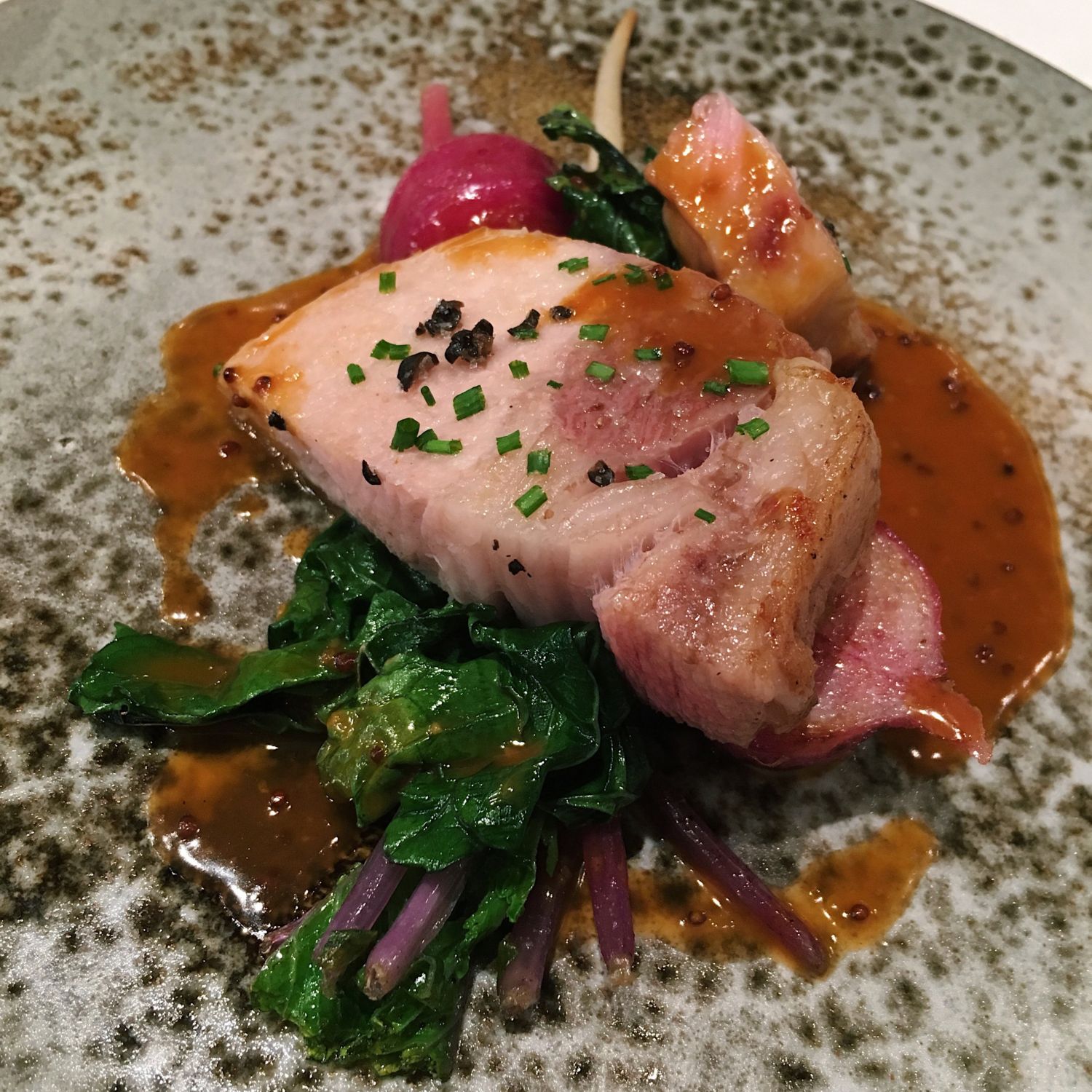
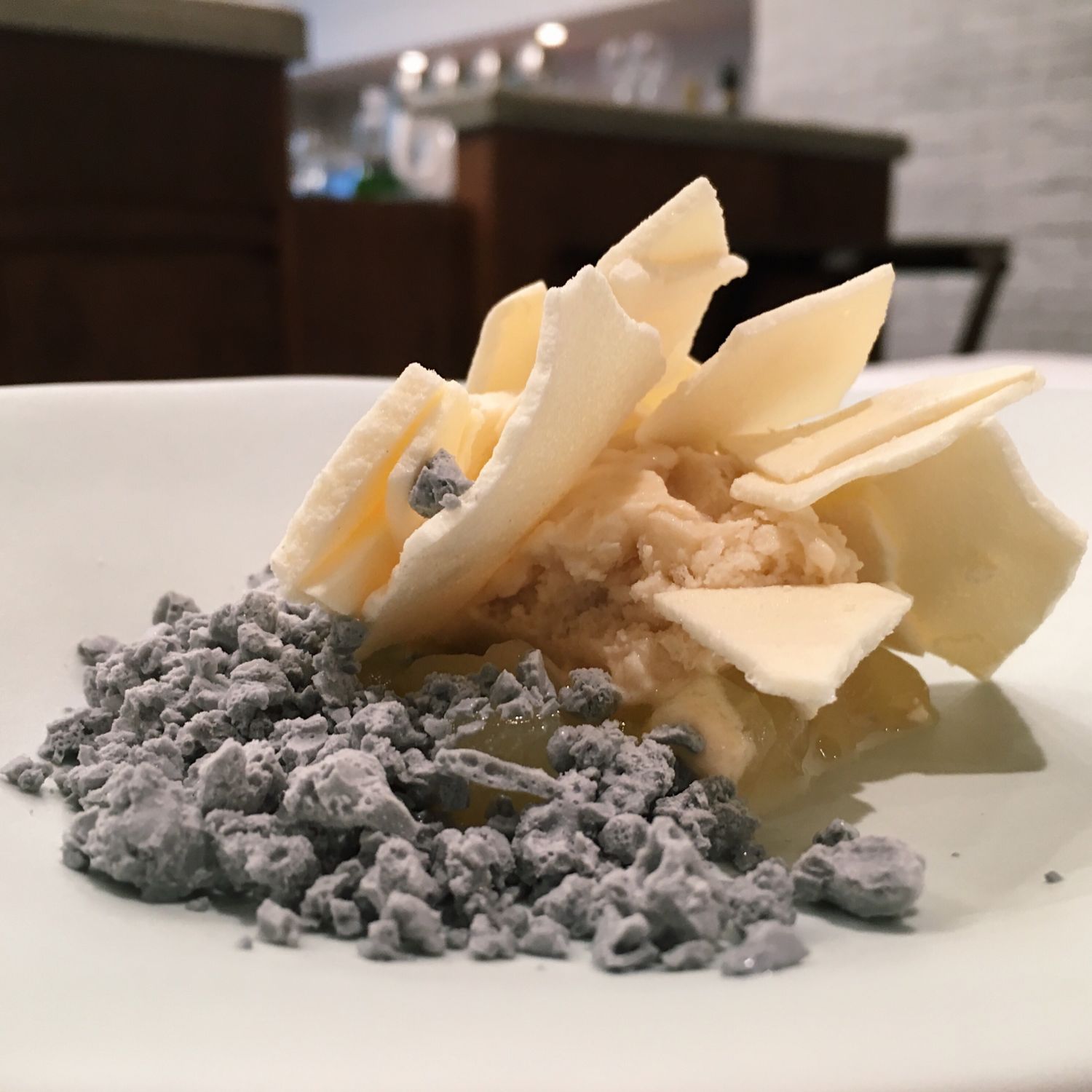
Sublime
5-7-7 Shinbashi, B1F
Minato-ku, Tokyo
And so the tale of four Tokyo Michelin star restaurants comes to a close.
How did my experiences affect my impression and feelings towards the Michelin guide? The quality of the restaurants is undeniable. However, the restaurants were naturally and expectedly not the paragons of gustatory and experiential perfection that ownership of a Michelin star may suggest.
One sad thing is that whilst Nabeno-Ism stood head and shoulders above the others in my personal view, Abysse and Sublime displayed great potential and return value. If not for the considerable financial expense involved in chasing stars, and the fact that the little red book contains so many more French/Innovative restaurants for my consideration (not to mention all the highly-regarded Tabelog recommendations not in the Michelin guide), I might actually make a return visit, perhaps during another season. In that regard, it is so important that a restaurant leaves the best possible first impression on the visitor, because it is unlikely it gets to make a second one.
As for the title of this post? What can I say – the Michelin guide sure helped me see red.


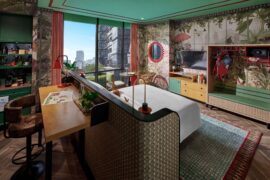
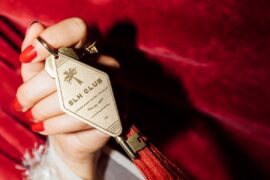
Comments are closed.